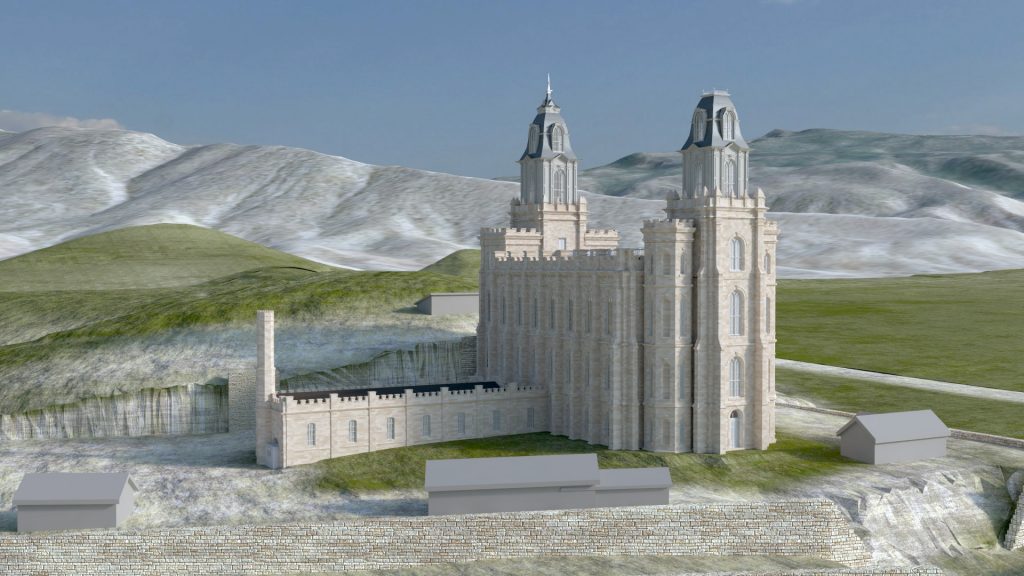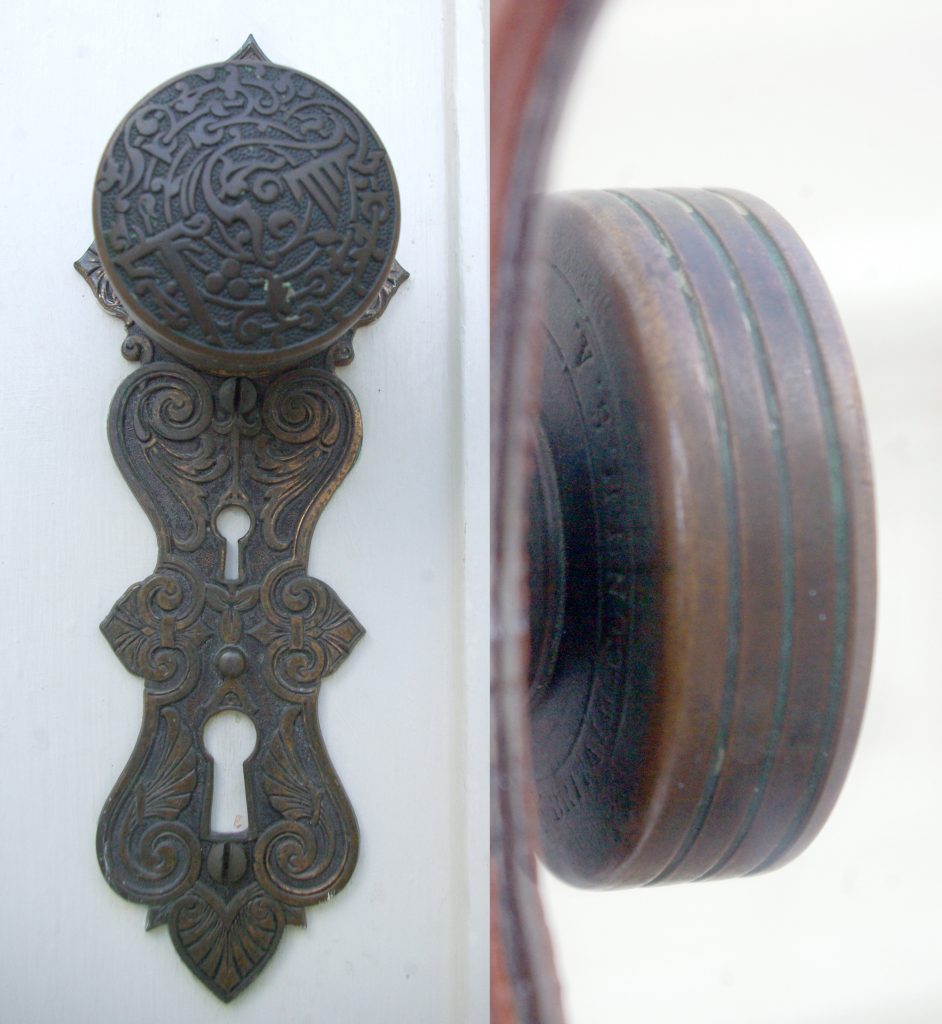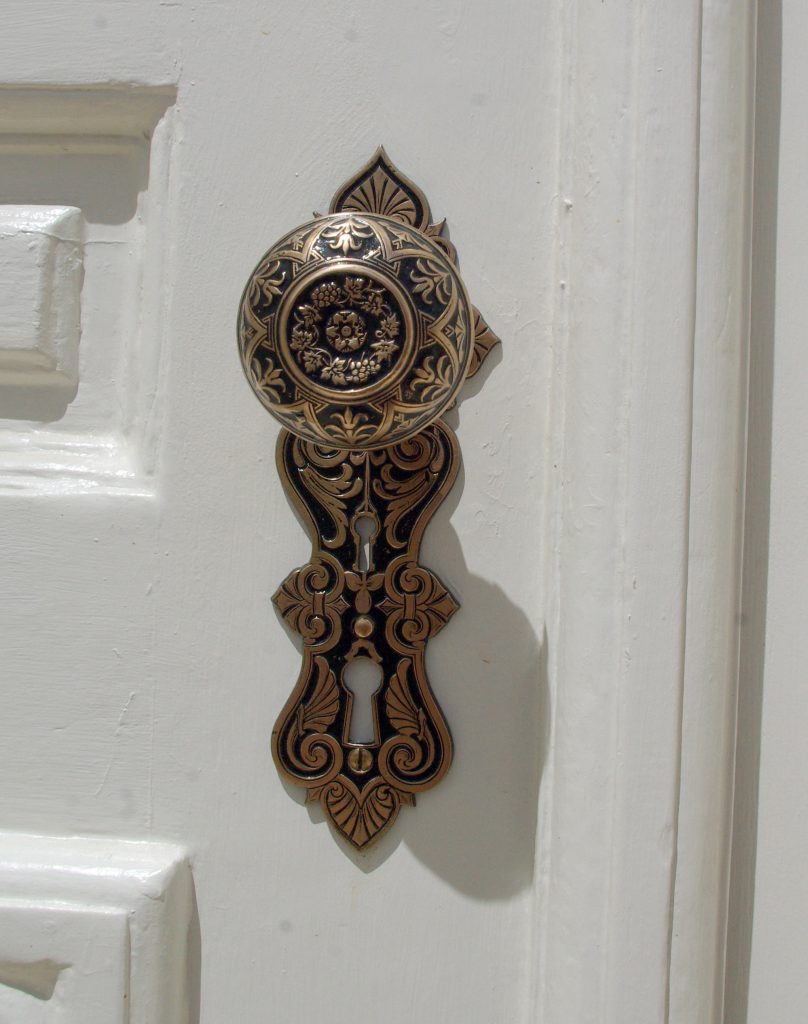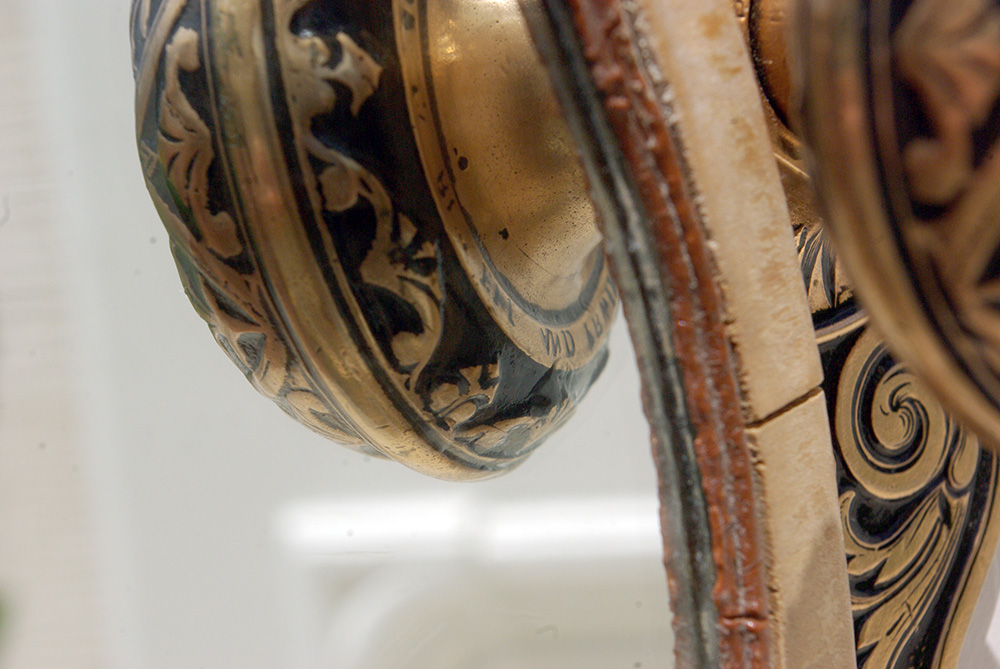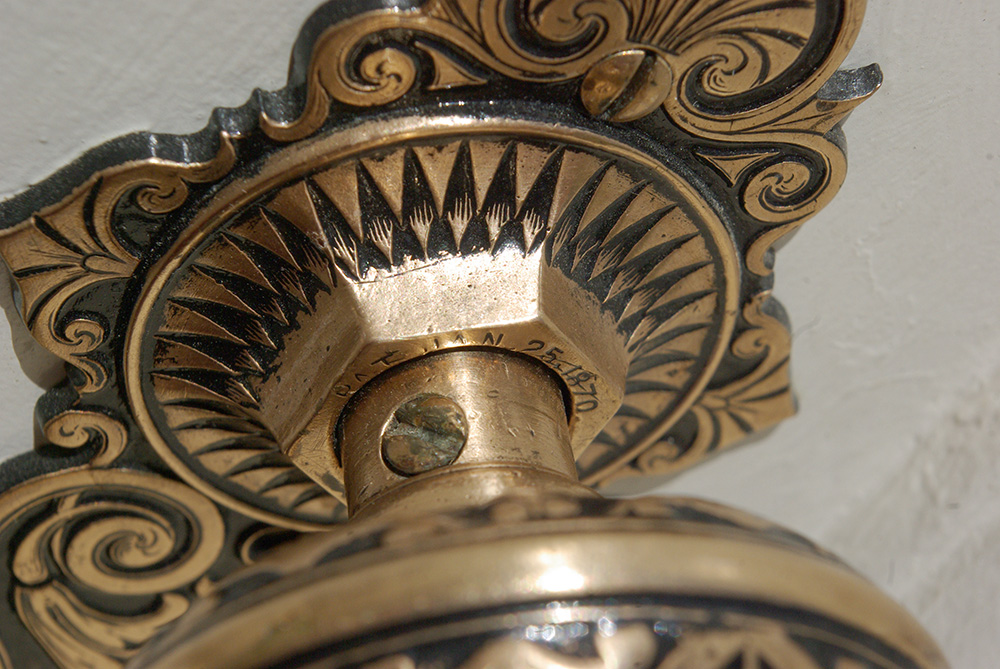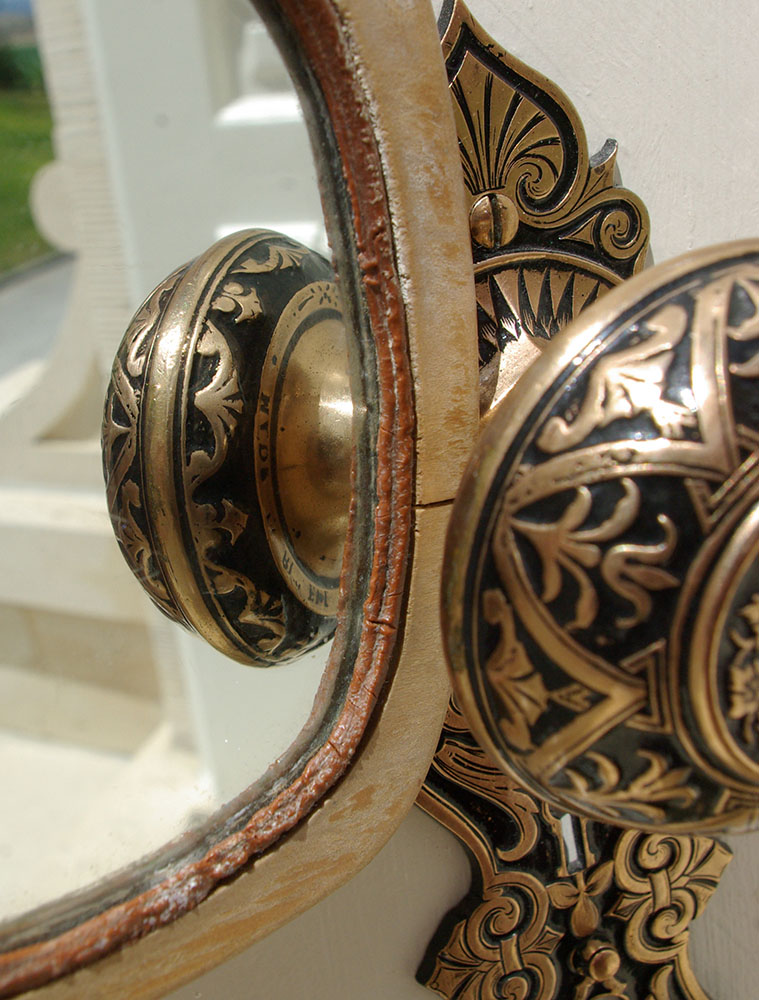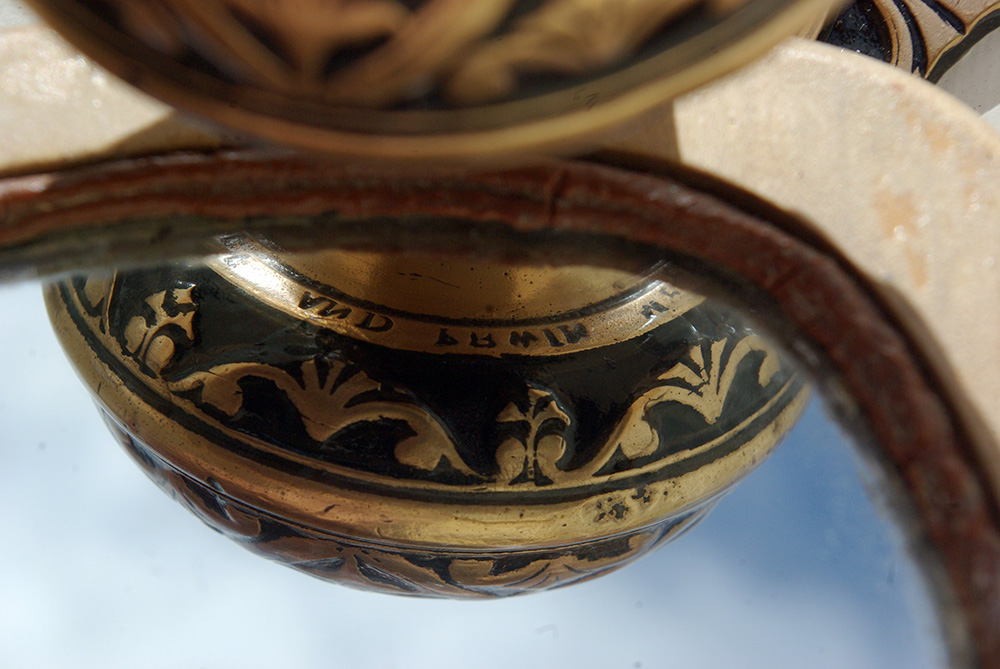Quick Facts
ANNOUNCED
25 June 1875
ANNOUNCED BY
President Brigham Young
GROUNDBREAKING
4 April 1877
GROUNDBREAKING PRESIDED BY
President Brigham Young
DEDICATED
17 May 1888
DEDICATED BY
President Wilford Woodruff
Additional Facts
#1
This is the third Latter-day Saint temple built in Utah. It is also the fifth temple built since the Church of Jesus Christ was restored but the third-oldest temple still in operation.
#2
When Latter-day Saint pioneers first came to the Sanpete Valley, extreme cold caused them to take shelter on a hill. That became the same hill the Manti temple was built on.
#3
President Brigham Young dedicated the site of the Manti temple on his way home from dedicating the St. George Utah Temple.
#4
The architect for the Manti temple was William H. Folsom, the same person who designed the Provo Tabernacle (now Provo City Center Temple) and the Salt Lake Tabernacle.
Description
The Manti Utah Temple, Located in the city of Manti, Utah, is the fifth constructed temple, the third temple built west of the Mississippi River, and the third still in use. It was preceded by The St. George Utah and Logan Utah Temples. The Manti Temple was designed by William Harrison Folsom, who moved to Manti while the temple was under construction. Up until 2019, it was one of only two remaining temples in the world where live actors are used in the endowment ceremonies (the other was the Salt Lake Temple); all other temples use films in the presentation of the endowment.[1]Satterfield, Rick, “Manti Utah Temple”, Temples of the Church of Jesus Christ of Latter-day Saints, LDSChurchTemples.com, retrieved 2012-10-11 Like the Original St. George and Original Logan Temples, it uses 4 progressive rooms to represent progression through life.[2] Boyd K. Packer. The Holy Temple, p. 35
History
Timeline
On Dec. 4, 1873, Church President Brigham Young announced a temple for Sanpete County, Utah, during a conference held in Ephraim, Utah. On June 25, 1875, during another conference in Ephraim, President Young announced the temple would be built in Manti.
President Brigham Young dedicated the temple site for construction at noon on April 25, 1877. Though he had been carried through the St. George Temple for its dedication just a few days earleier, he knelt at one of the temple corners, flanked by his counselors, and dedicated the site after turning a shovel of soil.
The First PResidency and several other local and general authorities placed the 4 cornerstones of the temple, the hill having taken 2 years to be blasted and leveled to clear the spot.
A private dedication was held on May 17, 1888, before the public dedication. President Wilford Woodruff, the senior Apostle after the death of President John Taylor, offered the prayer. Elders Lorenzo Snow, George Q. Cannon, Brigham Young Jr. and Heber J. Grant of the Quorum of the Twelve Apostles and other selected Church leaders were present.
The Manti Utah Temple was dedicated publicly from May 21 to May 23, 1888, during three sessions. Elder Lorenzo Snow of the Quorum of the Twelve Apostles read President Woodruff’s dedicatory prayer. Around 5,400 Latter-day Saints attended the services.
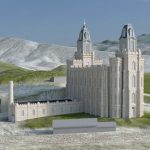
The First Presidency announces the pending closure of theManti Temple. The closure will see the annex expanded into the space between the existing annex and the east terrace wall. A new entrance to be added at that time as well.
The temple was temporarily closed fall 1981 for major renovations. Reconstruction included adding new dressing rooms, a children’s nursery area, new offices and three new sealing rooms. Several other changes modernized the pioneer-era temple, such as by recarpeting and refurbishing the interior and installing air conditioning, heating and plumbing systems.
An open house for the temple’s rededication was held from June 6 to June 8, 1985. The event brought in 40,308 visitors, and some visitors waited in line for two and a half hours to enter
President Gordon B. Hinckley rededicated the Manti temple from June 14 to June 16, 1985, throughout nine sessions. A total of 19,786 people attended the services.
President Russell M. Nelson announced during April 2019 general conference that the Manti temple (and all other Pioneer era Temples) would be renovated in the coming years.
POn Oct. 1, 2021, the temple was closed for mechanical and technological upgrades. Renovations include strengthening the foundation, improving the electrical systems and retrofitting endowment rooms with film technology to allow the ceremony to be viewed in 90 languages.
A public open house will be held for the temple from March 14 to April 5, 2024. A media day will also be held March 11, and invited guests will tour the temple March 11-14.
The Manti Utah Temple will be rededicated April 21, 2024. The presiding authority at the ceremony has not yet been announced.
On 9 April 1850 Nelson Higgins wrote a letter from Sanpete County to Brigham Young. The leter, published in the 27 April Deseret News, says that an adobe wall fort was being built in the county (at the future location of Manti). The fort enclosed 59 acres, and, according to the leter, a lot in the middle, even then called the Temple Block, was being reserved. This block, Block 56, houses the city Tabernacle.[3]Lillian H. Fox, “Manti’s Historical Block 56,” Saga of the Sandpitch, v 22, 1990, p23. https://www.sanpete.com/uploads/1/3/6/2/136253634/saga_of_the_sanpitch_22.pdf
Monday 5 August of 1850 saw Brigham Yound and Heber C. Kimball choose the site for a city at the Sanpete Fort. 110 blocks for the city were then surveyed by William M. Lemon. Though there is no surviving record of it fromt he time, settlers would later assert that Brigham Young pointed out the nill north east of the town as being the future site of the temple at that time.[4]Journal History of the Church, 5 August, 1850. Historical Department journal history of the Church, 1830-2008; 1850-1859; 1850; Church History Library, https://catalog.churchofjesuschrist.org/assets/2f0fd083-3682-471f-819f-1326494961f6/0/840?lang=eng (accessed: December 7, 2023)
Announcement
Brigham Young announced the decision to build a temple in Manti on June 25, 1875. The Salt Lake Temple had been announced in 1847, but construction was still underway and not finished until 1893. The Manti Temple was built, along with the St. George and Logan temples, to satisfy the church’s immediate need for temple work.
The site for the temple was the Manti Stone Quarry, a large hill immediately northeast of town. Early Mormon settlers in the area had prophesied that this would be the site of a temple.
Construction Summary
Groundbreaking
Ground was broken on 4 April 1877 by Brigham Young at noon. With John W. Young and Daniel G. Wells standing at his side, he turned the soil at the south east corner, then offered the prayer while kneeling. After dedicating the ground and calling for a blessing on those who would construct the temple, a call was made for contributions to the work. Picks, Plows, scrapers, teams and wagons were called for. A request was made that there always be between 50 and 100 men working on the temple each working day. Calls for donations were issues.[5]”Prayer Offered by Prest. Brigham Young,” Deseret News, 16 April 1877
The ceremony was witnessed by some 400 people, and lasted about 20 minutes.[6]Deseret News, 28 April 1877
Cornerstone Ceremony
The Cornerstone Ceremony for the temple took place on 14 April 1879 at 12:00 noon, 2 years and 10 days after the initial groundbreaking.
President Taylor conducted, and gave a brief introduction, after which Charles C. Rich gave an opening prayer.
First Cornerstone – South East
Erastus Snow then spoke on Faithfulness and promptness in discharging duties, after Which President Taylor directed William H. Folsom, Chief Architect, and Master Mason, L. Perry, to lay the cornerstone. After the placement, he “declared it well and properly laid” and invoked the blessings of the Lord upon the stone, the building, and all who should contribute in any way to the construction. Apostle Lorenzo Snow then gave a prayer. A brass band from Nephi, directed by J. S. Hawkins. played several pieces.
Second Cornerstone – South West
The officiating group moved to the next cornerstone. Placement of the stone was then done by Perry and Folsom, after which Bishop Edward Hunter then “declared properly done.” Bishop Hunter then asked God to bless the building and all those who would contribute in any way to its construction. A prayer was then offered by Bishop L. W. Hardy. Nephi Brass band and a Manti Choir played a piece composed for the occasion by Eliza R. Snow.
Third Cornerstone – North West
Stone was placed and pronounced “well and properly done by Elder Cox, the high priest Quorum President in Manti. A prayer was then offered by the local Stake President, Canute Peterson. The Brass Band and Choir then performed again.
Fourth Cornerstone – North East
Lastly, the Twelve Apostles on hand moved to the final corner, where after placement President H. S. Eldredge pronounced it well and properly done, and then invoked the blessings of the Lord on the building and all who participated in it’s construction. A Prayer was then given by Elder Van Cott. The Choir and band then performed an anthem, “O Thy Temple, Lord,” words and music by Choir director James C. Brown.
Completion
The twelve then moved to the center of the building. Talks were given by Apostles Franklin D. Richards, Brigham Young Jr, Joseph F. Smith, Albert Carrington, and Moses Thatcher. Then President Taylor declared the stones of the temple “Well, properly, and duly laid,” then closed his remarks by praying for God to bless the temple and the people. Bishop Hunter then gave closing remarks, and the ceremony concluded.
Official Attendees
Apostles
- President John Taylor
- Charles C Rich
- Lorenzo Snow
- Erastus Snow
- Franklin. D. Richards
- Brigham Young Jr.
- Joseph F. Smith
- Albert Carrington
- Moses Thatcher
First Presidency of the Seventies
- A. P. Rockwood
- B. S. Eldredge
- J. Van Cott
Presiding Bishopric
- Edward Hunter
- L. W. Hardy
- R. T. Burton
Construction
Construction of the foundation took 2 years. The Temple hill is solid rock which prevented a challenge for those digging the foundation. The process was sped up by Digging shaped tunnels in the hill, and using gunpowder to break up the rock, loosening thousands of tons of rock at a time.[7] Victor J. Rasmussen, The Manti Temple (Provo, UT: Community Press, 1988).
A well-known story recalls Edward Parry, the master mason, seeing one of the stoneworkers about to place a cracked stone on the building. “I will put the crack on the inside. No one will know it is there,” said the stone layer. “That is not quite right!” replied Brother Parry. “You will know it, I will know it, and the Lord will know it. Now remove the stone and replace it with one without flaws!”[8]Dennis Lyman, History at Temple Hill: Manti, VHS (Sandy, UT: Temple Hill Video, 2003).
On another occasion, Edward Parry awoke in the morning to find that his mules were missing. Parry was in the habit of taking these two mules to the temple every day to assist in the construction work, hoisting rocks to different levels of the building. After anxiously searching all around, he finally walked to the temple site without them. When he arrived, his two mules were there, already in place, ready to be hitched up for the day’s work.[9]Dennis Lyman, History at Temple Hill: Manti, VHS (Sandy, UT: Temple Hill Video, 2003).
Construction Detail
Dates below are often the dates of the article when it was published, and may not reflect the actual date of the event in question. Events in the reports may have happened some time before hand, but are useful in giving a general outline of construction.
1877
Monday, 16 April
Brigham Young leaves St. George, heading for Manti.
Wednesday, 25 April, 12:00 noon
Groundbreaking for the temple by Brigham Young.[10]”Prayer Offered by Prest. Brigham Young,” Deseret News, 16 April 1877
Thursday, 10 May
Deret News reports, via a letter from John B. Maiben, that work has begun on the approaches to the temple pad, as well as beginning the leveling of the pad itself. Housing was nearing completion for workers from nearby settlements who had been sent to assist.[11]Deseret News, 10 May 1877
Friday, 5 October
Work is progressing on the grading of the temple pad. Creation of the pad was being done by blasting, with one recent blast removing 2,000 yards of debris. Excavated rock was being laid in the terraces being built below the temple. 550 cords (about 1474 tons) of rock had been laid in the terrace walls so far. 107 men, and 17 teams of draft animals were engaged in the labour.[12]Deseret News, 5 October 1877
Saturday, 10 November
Willim H. Folsom reports that 161 men are engaged in the construction, and more than 800 cords (2144 tons) of stone placed in the terrace walls so far. Grading of the building pad is about half complete.[13]Deseret News, 10 November 1877
Monday, 19 November
In a council meeting, the decision was made that instead of building the temple of stone and plastering the walls, as had been done at St. George, they would instead cut the stone to finish grad, and point the mortaring. This decision gave teh temple it’s unique cream limestone exterior it has to this day. Prior to the meeting, Wilford Woodruff and others attending witnessed the letting off of a blast of 375 pounds of black powder, further working to clear the building pad for the temple.[14]Journal History of the Church, 19 November 1877, p5, Historical Department journal history of the Church, 1830-2008; 1870-1879; 1877 November-December; Church History Library, https://catalog.churchofjesuschrist.org/assets/802b5e6e-0f0c-4df2-a8ed-5172cac78a05/0/240?lang=eng (accessed: December 7, 2023)
Thursday, 13 December
Reported by Wilford Woodruff to the Deseret News that 150 men, and 15 teams engaged on the temple construction. recent blast removed an estimated 2,500 yards, around 2,500 tons of rock from the temple pad.[15]Deseret News, 13 December 1877.
1878
Sunday, 10 March
140 men and 20 teams currently at work on the temple. Recent record of 180 men on construction in a single day reached. Recent blast conducted by digging 23 feet into the hill, and then “T”ing off 16 feet to either side. 800 pounds of powder were then used to loosen 650 yards of earth. 2 of the terrace walls are now complete. Planning to shoot for having the ground ready for the cornerstones by May.[16]J. Taylor, letter to his father, President John Taylor, Deseret News, 10 March
Thursday, 27 June
Last blast to clear temple pad fired at 12:20 pm. 875 pounds of powder were used to move 4/600 yards of rock.[17]Deseret News, 27 June 1878.
1879
Wednesday, 26 March
Terrace walls “completed as desired for the present.” A gap had been left in the center of each wall, in line with where the west doors of the temple would be. The plan was to put a large staircase through the walls. When the decision was eventually made to add a staircase in that location some 50+ years later, the walls were first removed and the hill graded, the terrace plan never being completed. The site was now ready for the cornerstones, the ceremony for which would be announced later. Stone was now being cut and prepared for the walls of the temple, and stacked on site until after the cornerstones were laid.[18]”Manti Temple,” Deseret News, 26 March 1876.
Monday, 14 April
Cornerstone Ceremony held, starting at noon, with all The President, Several Apostles, First Presidency of the Seventy, and presiding Bishopric in attendance. Several speeches and Choir numbers were given.[19]Ogden Semi Weekly, 19 April 1879
1880
Saturday, 19 June
Walls of the temple reach 12-14 feet in height.[20]The Daily Ogden Junction, 19 June 1880
Tuesday, 17 July
Walls now 12-15 feet high, 70 men and 10 wagon teams at work on the temple.[21]The Daily Ogden Junction. 17 July 1880
Thursday, 23 September
Seventy five men at work on the temple, walls reach 18-23 feet in height.[22]The Ogden Daily Junction, 23 September 1880
1881
Monday, 7 December
Reported that 28 feet had been added to the temple walls this year. [23]”Utah Stake Conference,” Territorial Enquirer, 7 December; Irvine, John “Discourse By President John Taylor in the Salt Lake Assembly Hall, Sunday afternoon, December 11, 1881,” Deseret News, 15 March 1882.
1882
Friday, 14 April
Reported the walls are now up to 50 feet, with only 30 more to bring them up to the square (Architectural term meaning the roofline, or top of the wall.) Enough rock on hand to bring the walls up to square, and lumber being stockpiled for interior.[24]”Manti Temple,” Logan Leader, 14 April 1882
Monday, 5 June
Walls reported up to 65 feet by Edward L. Parry, Master mason of the temple.[25]”Manti Temple,” Deseret News, 5 June 1882.
1883
Saturday, 3 March
William H, Folsom, Architect and Superintendent of the temple reports that construction is soon to resume, having been suspended for the winter. Scaffolding is being erected at that time. Rock has been cut and finished all winter.[26]”Manti Temple,” Deseret Evening News, 3 March 1883
Wednesday, 25 July
Walls have now reached the square, and the roof has begun framing.[27]”Manti Temple,” Deseret News, 25 July 1883.
Thursday, 9 August
William Folsom reports the roof is coming along, the parapet walls along the edge of the roof will go in shortly after, with the highest point of the parapet being ten feet above the walls at square. The east tower has reached 14 feet above square, and the west tower six. 60 men ar at work on the temple, and another 15 at the Temple Saw Mill. 5000, 000 feet of lumber are now on hand for the roof and interior.[28]”The Manti Temple,” Ogden Herald, 9 August 1883.
Wednesday, 26 September
Metal for the tin roof of the Manti Temple arrived in Salt Lake. The sheets of metal will be soldered together and rolled up before being shipped to Manti. Copper for the gutters has also arrived.[29]”Metal for the Roof,” Deseret News, 26 September 1883
1884
Thursday, 14 February
Stone cutters are at work cutting stone for the next season of rock laying. Excavation has begun for the foundation of the temple annex. Work has begun on clearing for the east retaining wall, which will run north from the east end of the temple. A machine shop has been built on the second terrace, below the grade the temple sits on. An engine room on the site provides power for machinery, pumps water for various purposes, and provides steam heating in the shops. Sand and cement are being manufactured on site by a crusher.[30]Deseret Evening News, 16 February 1884
Wednesday, 23 July
West tower is now complete, except cornice and parapet. Work has begun on the stone walls of the north annex.[31]Deseret News, 23 July 1884
Friday, 5 December 1884
William Folsom reports the west tower stonework finished, and the North annex has the roof on. Piping has been laid through the whole temple except the third floor (Assembly Hall.) The boiler in the annex is functional, and the lower floors of the interior of the temple are now heated, allowing the interior work to continue through the winter. Glass is in the windows everywhere but the west tower. [32]”The Manti Temple,” Deseret News, via The Southern Utonian, 5 December 1884.
1885
Sunday, 7 June
Plaster work has begun on the first story, and the second story is nearly ready for plaster. [33]”Work on the Manti Temple,” Deseret News, 7 June, 1885
Sunday, 29 November
Federal Marchall Deputies searched the temple this morning looking for William Asper and William McLachlin (reasons not stated in the article.) Neither man was to be found.[34]”Deputies at Manti,” Salt Lake Herald-Republican, 1 December 1885.
1886
Saturday, 20 March
Morgan Davis, Plasterer, returned home having finished work on the Temple interior. He reports portions of the carpenter work (likely trim work) and painting are still unfinished.[35]Salt Lake Herald-Republican, 20 March 1886
Sunday, 19 December
East tower of the temple reported nearing completion.[36]Salt Lake Herald Republican, 19 December, 1886
1887
Tuesday, 24 May
Deputy Marshals Dykes, Clawson, and Ether searched the temple in the first raid under the Edmunds Law. Earlier that morning they had searched the home of Bishop William T. Reid. Unable to find him, they then demanded entrance to the temple, which was deneid initially until a warrant was produced. This search was also unsuccessful.[37]”Ransacking the Temple,” Deseret News, 1 June 1877.
Wednesday, 20 July
East tower reported complete.[38]Deseret news, 20 July 1887.
Friday, 21 October
Temple ready for furnishings, furniture, and upholstery.[39]”The Manti Temple,” Salt Lake Herald-Republican, 21 October 1877.
1888
Wednesday, 9 May
First Presidency announces the dedication date of the Manti Temple. The temple will be dedicated Monday, 21 May, beginning at 10 AM. The Sanpete Stake Quarterly Conference will be held the preceding Saturday and Sunday. Dedication Services will continue to be held as necesitated by attendance numbers.[40]”Manti Temple,” Salt Lake Herald-Republican, 9 May 1888.
Dedication
The temple was completed in 1888, and a private dedication was held on May 17, 1888, By Wilford Woodruff then President of the Quorum of the Twelve. John Taylor had passed, and the Church was being led by the apostles, Woodruff not yet having been ordained as President. The prayer, written down, was then used by Lorenzo Snow in three public dedications held on May 21–23, 1888.[41]“May this delightful location be known as a holy hill of Zion, among Thy people”, Church News, Jan 1, 1950 This was the only temple dedicated by President Lorenzo Snow, and was the first of 2 Temple dedications for Wilford Woodruff, the second being Salt Lake, about 5 years later.
Construction Duration
| Span | Duration |
|---|---|
| Announced to Groundbreaking | 1 y, 10 m, 0 d |
| Groundbreaking to Dedication | 11 y, 0 m, 22d |
| Announced to Dedication | 12 y, 10 m, 22 d |
Dedication Order
GLOBAL
3
REGION
N. AM
3
COUNTRY
US
3
STATE
UT
3
COUNTY
SANPETE
1
CITY
MANTI
1
The Manti Temple was the 5th temple built by the Church, and the 3rd still in active use. At the time of its dedication there was one other temple, the Salt Lake Temple, under construction. There were no other temples announced at the time of dedication.
Announced
- –
Under Construction
1890s
1890s smoke from the furnace at the north end of the annex was discoloring the building. Thus, one of the first improvements was the construction of a new smokestack with a flue taking the smoke from the basement of the annex out to the hill on the east side of the temple.[42] Victor J. Rasmussen, The Manti Temple (Provo, UT: Community Press, 1988).
1906
As part of this landscaping project, 3 massive terrace walls around the temple were removed. The initial plan had been to have the walls bisected by a long staircase. The walls were completed up to the point that would have required the construction of said staircase, then paused to focus on the temple instead. The intention had been to come back to finish the staircase. When the decision was made to install a staircase, almost 20 years post dedication, and almost 30 years after the walls were started, The decision was made to remove the terraces instead. The hill was graded and grass was planted on the hill.[43] Victor J. Rasmussen, The Manti Temple (Provo, UT: Community Press, 1988).
1907
Following the grading of the hill, begun the year before but finished in 1907, Construction of a great stone stairway leading up the hill to the west temple doors began.[44] Hart, John L. (May 7, 1988), “Manti Temple 100 years old, in mint condition for centennial”, Church News
1924
Major renovation to the temple annex began on 28 March of 1924.The basement on the north end was excavated, lowering the boiler room 8-9 feet. This allowed the main annex floor to be extended across the top of the new Boiler Room all the way to the existing North wall. The new space created by this was used for a new kitchen and dining room. The original kitchen space was then converted into a nursery space where children could be entertained while their parents were attending the temple. As part of this renovation, the entire heating system was reworked or replaced.
Additionally included was the creation of a large water storage tank on the grounds. Water from the spring was collected through the night in the tank, then used to irrigate the grounds.[45]”Temple to Close for Extensive Repairs Mar. 28,” Manti Messenger, 14 March 1928. The renovation was anticipated to take 3-4 months.
1928
On the morning of August 26, 1928 lightning struck the east tower of the Manti Utah Temple, though the morning had been bright and sunny. A fire started at the south east tower that burned downward for three hours before it could be extinguished. Despite the length of time, little damage was done. Repairs cost a little over $700 dollars. Many people said “it was the slowest burning fire they had ever seen.” This heart-stopping episode encouraged the installation of a lightning rod soon after, an addition that cost more than the repairs to the temple tower.[46] Victor J. Rasmussen, The Manti Temple (Provo, UT: Community Press, 1988).[47]”Lighting Fires Temple At Manti Burns East Spire,” Deseret News, 27 August 1928; “Menacing Fire Threatens Temple,” Gunnison Valley News, 6 September 1928.
1934
On 15 July 1934, the temple was fully lit at night for the first time.[48]
1935
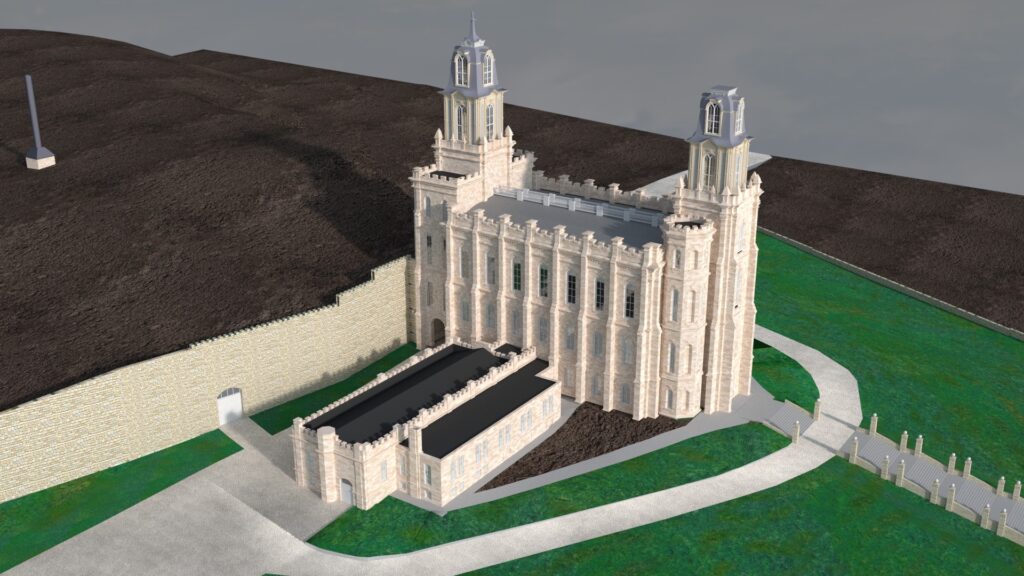
In 1935 a new annex extension containing a Linen Room and Office space was added to the west side of the annex. At the same time, excavation commenced under the Creation and Garden Rooms for the remodeling of the temple. Wash rooms, workers’ dressing rooms, locker rooms, rest rooms, and a stairway leading to these new areas were constructed.[48] Victor J. Rasmussen, The Manti Temple (Provo, UT: Community Press, 1988). Construction began around the beggining of August, and was expected to finish up later that fall.[49]”Temple Improvments Being Made,” The Ephriam Enterprise, 9 Septmeber, 1935
1940
On 18 March 1940 work was undertaken to remove the stone stairs and to beautify the grounds.[50]Hart, John L. (May 7, 1988), “Manti Temple 100 years old, in mint condition for centennial”, Church News
1944
Between 1944 and 1945 the annex, chapel, kitchen, Garden Room, and men’s and women’s areas were remodeled.[51] Victor J. Rasmussen, The Manti Temple (Provo, UT: Community Press, 1988).
1946
Starting in August and continuing into 1947, Robert L Shepherd painted the murals in the Garden Room.[52] Victor J. Rasmussen, The Manti Temple (Provo, UT: Community Press, 1988).
1948
Robert Shepherd completed mural painting in the Baptistry this year.[53] Victor J. Rasmussen, The Manti Temple (Provo, UT: Community Press, 1988).
1949
New stone clad vestibule added to the primary entrance, on the east side of the annex, to better control the temperature on the nearby interior rooms.[54]”New Temple Entrance Nears Completion,” Manti Messenger, 21 January 1949
Also this year, Minerva Tiechert painted the mural in the World Room.[55] Victor J. Rasmussen, The Manti Temple (Provo, UT: Community Press, 1988).
1956
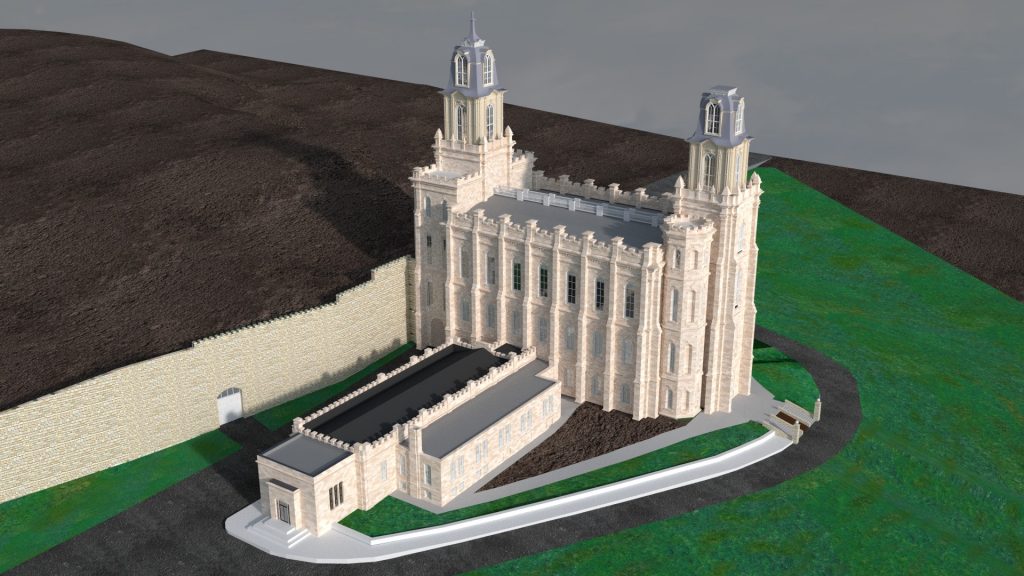
Commenced
On 31 July 1956 new annex entrance was begun. The new entrance extended the annex 25 feet to the north. The Original chimney was removed, and an entrance annex was built in that location. At the same time remodeling was undertaken for the cafeteria, enlarging the linen room, adding a nursery.[56] Victor J. Rasmussen, The Manti Temple (Provo, UT: Community Press, 1988).
Complete
The renovation completed about 5.5 months later on 15 January if 1957.[57]”Manti LDS Temple to Open January 15,” Manti Messenger, 10 January 1957.
1958
Work was undertaken for remodeling the baptismal area, with an assembly area, youth dressing rooms, and more lockers in the Brother’s and Sister’s dressing rooms. A Children’s waiting room was also constructed.[58] Victor J. Rasmussen, The Manti Temple (Provo, UT: Community Press, 1988).
1964
Commenced
The tunnel beneath the east tower of the temple through which wagons and cars could pass was closed off in 1964 as part of a long-term renovation plan. The plan would see space added to the Ordinance workers spaces, and the patron dressing rooms.[59]Victor J. Rasmussen, The Manti Temple (Provo, UT: Community Press, 1988). The renovation started with the temples annual closer, which was extended for 5 weeks beyond normal, The temple reopened for work on October 6, though the renovation would continue as part of the annual maintenance for the coming years.[60]”Manti Temple to Reopen October 6th,” Manti Messenger, 24 September 1964.
Completed
The use of the former tunnel space was finalized around 1969. That year, worker lockers rooms and a study room were put in the bottom floor of the new 2 story space, and patron lockers were added in the upper floor area of the archway.[61]”Manti Temple Eyes Renovation Work,” Ephriam Enterprise, 19 June 1969 This renovation would see an excavation started for a new addition to the temple annex to increase the space allocated to the ordinance workers changing areas
1981 Renovation
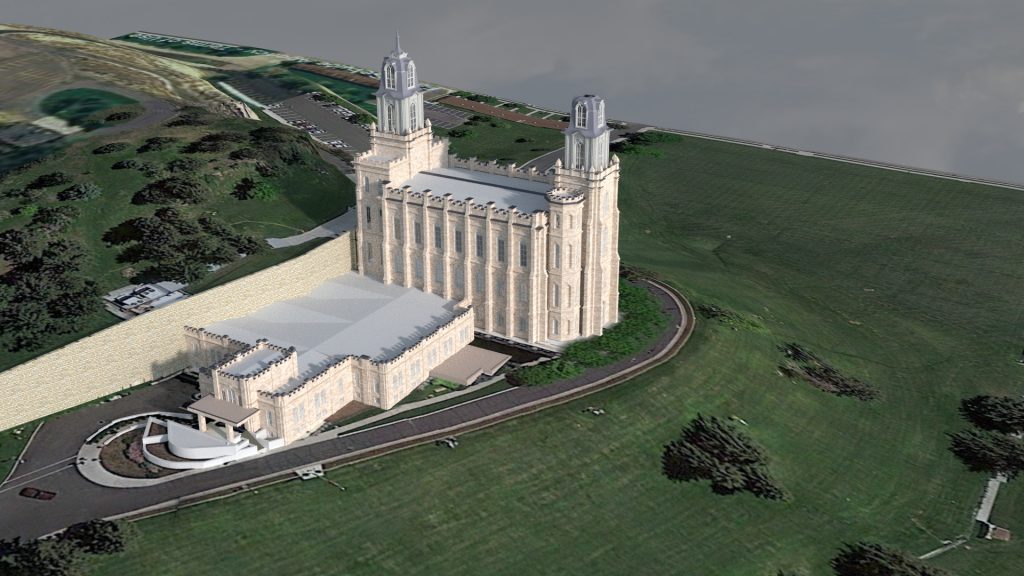
Announced
In 1981 church officials decided that the interior of the temple needed extensive remodeling. The renovation took four years, during which murals and original furniture were restored, offices were enlarged and remodeled, a separate entrance to the baptistry was made on the south side, water and weather damage were repaired, an elevator was installed, and locker rooms were improved among many other projects.
Announcement of the renovation was made via letter to local presidencies in May 1981.[62]”LDS Announce Temple Opening for Jordan River, and Close for Manti,” Daily Herald, 22 May 1981
Construction Duration
| Span | Duration |
|---|---|
| Announced to Groundbreaking | 4 m, 9 d |
| Groundbreaking to Dedication | 3 y, 8 m, 13 d |
| Announced to Dedication | 4 y, 23 d |
Commenced
The Temple closed and was decommissioned on 1 October 1981. Due possibly to the outcry over changes that had been made a few years prior at Logan Utah Temple, the First Presidency was careful to emphasize that “there will be no change in the interior design. The historic spiral staircase and the murals on the walls of the various rooms will be retained, as will much of the furnishings.”[63]”LDS Announce Temple Opening for Jordan River, and Close for Manti,” Daily Herald, 22 May 1981
Planning
Due to the age of the temple and the way things were done when it was built, there were no complete and existing plans of the temple as it then existed. The first year of the renovation necesitated surveying the building and drawing up a complete set of plans for the existing structure that were then used to draw up a new set of plans for the coming renovation.[64]”Temple Renovation,” Iron County Record, 23 September 1982.
Known Scope
- 2 Story addition on the annex
- Redo entrance to match the styling of the temple proper
- Separate baptistry entrance on the south side
- Improve the service area of the Baptistry
- Construct 4 new sealing rooms (primarily in tower spaces)
- Replace Mechanical, Electrical, Plumbing, Heating and Cooling
- Disconnect the temple from spring water, and connect to city culinary water. Spring still used for irrigation
- Install Fire suppression system
- Replace Roof
- Replace worst of weathered stone
- Remove existing sewer system and tie into city system
- Remodel/expand admin areas
- Add Foyer in extended annex
- New Locker and initiatory spaces
- Repair water damage to Assembly Hall
- Restoration of the Murals
Construction
The initial plan called for a renovation that would last 18 months to 2 years.[65]”LDS Announce Temple Opening for Jordan River, and Close for Manti,” Daily Herald, 22 May 1981 This would have had the temple open again between April or October of 1984. However, by June of 1984, President Wilbur Cox, the only member of Temple presidency and staff to have not been released at the onset of the renovation, was publicly stated that he would not personally hazard a guess as to the exact date the temple would reopen.[66]Mellor, Pat, “Temple Renovation Will Last for Millenium, President Says,” Manti Messenger, 12 June 1984.
Decorating
Florence S. Jacobsen, director of arts in the Church Historical Department, oversaw the interior decorating. Under her supervision, 65 original pieces of furniture were restored. Additional pieces from the 1880s were acquired, all in the Eastlake Design the temple was designed in by William Folsom.[67] Victor J. Rasmussen, The Manti Temple (Provo, UT: Community Press, 1988).
As part of the decorating, a design designed by Sister Jacobsen was needlepointed into an altar and thirty chairs in one of the ten sealing rooms. The needlepoint work was produced by 64 women of the Manti area.[68] Victor J. Rasmussen, The Manti Temple (Provo, UT: Community Press, 1988).
An original piece of early celestial room carpet was located in a local residence. A mill in England was contracted to reproduce the carpet for the renovated Celestial Room, no mills in the States being capable of the work.[69] Victor J. Rasmussen, The Manti Temple (Provo, UT: Community Press, 1988).
Open House
After the renovation was completed, 40,308 visitors toured the temple during a public open house held from June 6 to 8, 1985. (13,436 per day average.)
Rededication
14-16 June 1985, Gordon B. Hinckley, Second Counselor to President Spencer W. Kimball, directed the rededication ceremonies.[70] “News of the Church”, Ensign, August 1985[71]Cause Thy Holy Spirit to enter and pervade all of its rooms and facilities”, Church News, 23 June 1985
In the rededicatory prayer, President Hinckley said of the temple:
“Almost a century has passed since this temple was first used. We thank Thee for the great and marvelous work done herein during those years. … With great care its former beauty, so carefully crafted by its original builders, has been brought back. Our present labors have increased our respect and love for those who built it originally and who sacrificed much in doing so.”[72]Manti Utah Temple rededicatory prayer, in Church News, June 23, 1985, http://www.ldschurchnewsarchive.com/articles/61731/Manti-Utah-Temple–Cause-Thy-Holy-Spirit-to-enter-and-pervade-all-of-its-rooms-and-facilities.html.
Rededication Order
At the time the Manti Utah Temple was rededicated there were 8 temples under construction, and 7 temples awaiting groundbreaking.
Announced
Under Construction
1995 Preservation
In 1995 an extensive exterior preservation effort was undertaken on the exterior of the temple.[73] “Two temples scheduled for exterior preservation”, Church News, June 24, 1995 Limestone blocks that were in bad condition was replaced with newer stone where necessary.
2019 – Final Mormon Miracle (Manti) Pageant.
In 2018 the Church announced that the annual pageant in Manti, along with other similar pageants, would be discontinued. The 53rd and final Mormon Miracle Pageant was held June 13-15, and 18-22 of 2019.
2019 Renovation
Renovation Summary
Announcement
On 7 April of 2019 during the Sunday afternoon’s final session of the 189th Annual General Conference of The Church of Jesus Christ of Latter-day Saints, President Russell M. Nelson announced the eventual closure and renovation of the Pioneer area Temples, with Renovations to start soon at Salt Lake and St. George Utah.
Initial Details
On March 12, 2021, the First Presidency announced the initial details of a major, multi-year renovation of the Manti Utah Temple. The beginning of the renovation, while not explicitly stated, is set to begin later in 2021.[74]The Church of Jesus Christ of Latter-day Saints News Release, “First Presidency Provides Update about Historic Temple Renovation,” 12 Mar. 2021. Details revealed to date include the following
Construction Duration
| Span | Duration |
|---|---|
| Announced to Groundbreaking | 2 y, 5m, 28 d |
| Groundbreaking to Dedication | 2 y, 6 m, 19 d |
| Announced to Dedication | 5 y, 17 d |
- Mechanical and structural updates will be made to accommodate an altered floor plan, primarily to improve accessibility for patrons.
- The progressive room-to-room presentation of the endowment by live actors will be replaced by single-room video presentations.
- The instruction room murals will be photographed, documented, and permanently removed.
- The historic spiral staircases will be preserved during renovation.
Almost immediately after the announcement of the plans, a petition was started online to preserve, rather than renovate the temple. This petition managed to gather thousands of signatures of people wishing to see the temple restored.[75]Williams, Jake, “Save the Manti Temple Murals,” change.org,
Mural Preservation
About 12 days after the announcement of the remodel, the Church announced that every effort would be made to remove the murals intact, restore them, and save them for eventual display in a public place.[76]Stack, Peggy Fletcher. “Historic Manti Murals May Be Saved after All, but Not in the Temple.” The Salt Lake Tribune, 24 Mar. 2021, /. The petition, which at that time had nearly 4,000 signatures, continued on, gathering over 8,000 signatures in about one month.
Revised Details
The Church took note of the outcry. After some months of deliberation, on 1 May 2021 the Church announced that, instead of remodeling the M anti Temple into a higher capacity temple, the Temple would be restored, and a high capacity temple would instead be built 7 miles away in Ephraim to meet future demands.[77]“Prophet Announces New Temple for Ephraim, Utah.” Newsroom.churchofjesuschrist.org, 1 May 2021.
This new plan would make difficulties for those enacting and planning the restoration, as the Limestone the temple is constructed of has severe issues with water infiltration that would need to be permanently addressed. The problems are to such a degree that it is estimated that only between 30 and 40% of the murals are actually original, the rest having been touched up and restored multiple times through the years.[78]Walch, Tad. “A Threat Stalks the Manti Utah Temple’s Minerva Teichert Murals.” Deseret News, Deseret News, 21 May 2021.
Both the original temple remodel announcement[79]The Church of Jesus Christ of Latter-day Saints News Release, “First Presidency Provides Update about Historic Temple Renovation,” 12 Mar. 2021. and the revised plan announcement[80]“Prophet Announces New Temple for Ephraim, Utah.” Newsroom.churchofjesuschrist.org, 1 May 2021. mention issues with “Water Infiltration” and “water damage” in such ways as to suggest that perhaps the murals were not the only thing being damaged.
Renovation Commenced
The Temple closed for renovation on 2 October 2021.
Open House and Rededication Announced
On 20 November 2023 the Church announced the pending Open House and rededication for the Manti Utah Temple. An Open House would be held from 15 March to 5 April 2024, jsut three weeks, or 18 days as open houses are suspended on Sundays. Following the Open House, the temple would be rededicated on the 21st of April, just 4 days shy of its 147th Anniversary of the original Dedication.
Open House
Renovation Details
Details and news updates taken from churchofjesuschristtemples.org.
2021
Friday, March 12, 2021
Multi-Year Renovation of the Manti Utah Temple to Begin This Year
The Manti Utah Temple is slated for a major, multi-year renovation that will begin later this year. In addition to structural and mechanical updates that will prepare the temple to serve for generations to come, the progressive room-to-room presentation of the endowment by live actors will be replaced by video presentation in single rooms. The murals will be extensively photographed and documented before being removed, but the historic spiral staircases will be preserved.
Thursday, March 25, 2021
The Future of the Teichert Murals in the Manti Utah Temple
Church leaders have made the determination to save the murals painted by Minerva Teichert in the World Room of the Manti Utah Temple, which will be removed as part of a major renovation scheduled to begin this year. Since the murals were painted on canvas and affixed to the walls, painstaking efforts will be made to carefully separate them from the wall surface for subsequent restoration and display in a public setting. International experts are being consulted so that the best possible care is taken during the entire process.
Saturday, May 1, 2021
Modified Plans Announced for the Manti Utah Temple
At a press conference held in the Manti Tabernacle on Saturday, May 1, President Russell M. Nelson announced in a prerecorded message that plans for the Manti Utah Temple have been modified. He said: “We have been impressed to modify our earlier plans for the Manti Utah Temple so that the pioneer craftsmanship, artwork, and character will be preserved, including the painted murals loved by so many. We will leave those murals where they are located now—inside the Manti Utah Temple.” The announcement came immediately following an announcement of a temple to be constructed in nearby Ephraim, Utah. Brent Roberts, Managing Director of the Temple Department said the renovation will be a mix of preservation, restoration, and installation of new equipment. Mechanical, electrical, and plumbing systems will be evaluated and renewed or replaced. Audiovisual equipment will be installed for film presentations. Bishop W. Christopher Waddell of the Presiding Bishopric said, “The work that will now be done will not only honor the Lord but will honor our pioneer forbears whose sacrifice and talent will continue to be on display for generations to come as members of the Church worship in this sacred house of the Lord.”
2022
Sunday, April 3, 2022
Remediating a Long-Standing Water Leak at the Manti Utah Temple
On the east side of the Manti Utah Temple, stone has been removed and excavations carried out to address a long-standing water leak that runs from the hill to the east into the basement. Andy Kirby, the director of historic temple renovations in the Special Projects Department, said: “It’s been a persistent leak over many, many years, with several attempts to try to fix it. We hope we will be the final attempt to fix and prevent that leak from damaging the interiors of the temple.” He anticipates the full renovation of the temple will take at least two years.
Friday, May 13, 2022
Excavation Continues at the Manti Utah Temple
A trackhoe sits on the south lawn of temple hill where renovation continues on the magnificent 134-year-old Manti Utah Temple. On this same lawn, the annual Manti Miracle Pageant was held annually from 1967 to 2019. It was discontinued following a Church statement that stated: “Local celebrations of culture and history may be appropriate. Larger productions, such as pageants, are discouraged.” Excavation continues at the east end of the temple where a long-standing water leak is being remediated, and hardscaping has been removed from around the front entrance.
Tuesday, June 7, 2022
Facade of the Manti Utah Temple Annex Removed
The canopy and front facade of the Manti Utah Temple annex have been removed and replaced with a temporary wooden barrier. The planters at the foot of the annex were previously removed. Excavation activity continues on the east end of the building while excavation begins on the south. On the west end of the temple, scaffolding has been erected up the tower and around the steeple. Inside, the historic murals have been protected while other preservation and dismantling activities progress.
Saturday, September 17, 2022
135-Foot Boom Lift Delivered to the Manti Utah Temple
To support the continuing renovation of the Manti Utah Temple, additional heavy machinery has been delivered. In the accompanying photograph, a flatbed trailer truck carries a 135-foot boom lift to the base of temple hill. The basket at the end of the boom will lift workers who need access to the upper walls. Excavation has taken place around the east and south sides of the temple, giving crews access to the foundation stones.
Sunday, October 9, 2022
Refreshing the Manti Utah Temple Towers
Scaffolding is being removed from the west tower of the Manti Utah Temple, revealing the newly shingled roof and freshly painted balustrade that crowns the structure. Scaffolds have been erected around the east tower so that it can undergo the same renovations. The 134-year-old temple closed one year ago for major renovations of the interior and exterior. Modern upgrades and subtle floor plan adjustments will greatly enhance the flow and function of the temple.
Thursday, November 17, 2022
Refurbishing the East Tower of the Manti Utah Temple
Scaffolding has been fully removed from the refurbished west tower of the Manti Utah Temple, and plastic sheeting has been wrapped around the east tower, shielding the structure from the freezing outdoor temperatures. The east tower will receive the same treatments as the west tower including a new fiberglass finish, gel coat, and roof shingles. All leaks are being remedied, which have been a problem at the historic temple for years.
Saturday, December 24, 2022
East Wall Excavation and Hardscape of the Manti Utah Temple
One of the major projects for the Manti Utah Temple renovation has been the excavation of the east wall of the foundation. The task was complicated by the presence of solid rock that adjoined the 150-year-old rubble walls. Through a process of drilling and digging, a 47-foot hole was created and some 4,200 cubic yards of dirt and rock were removed. Crews are now installing approximately 2,500 linear feet of main and secondary water line along with 200 feet of sewer and storm drain lines. A reinvented hardscape will also be installed.
2023
Friday, January 20, 2023
Scaffolding Removed from the East Tower of the Manti Utah Temple
The refurbished towers of the Manti Utah Temple are on full display following the removal of scaffolding from the east end. Higher color contrast was introduced to the towers, which stand out more prominently from the limestone walls. The once ivory-colored structures are a lighter shade of off-white including the surrounding pinnacles. Roof shingles are slightly darker.
Tuesday, March 14, 2023
Manti Utah Temple Annex Entrance Revealed
The recently completed masonry work on the new entrance to the Manti Utah Temple annex has been uncovered. The structure was finished to complement the design of the historic temple with a battlement-style parapet and an arched doorway cased in stone with a central keystone. The 135-year-old building has been undergoing renovation for about 18 months.
Saturday, May 27, 2023
Memorial Day Weekend at the Manti Utah Temple
American flags fill the historic Manti City Cemetery, just north of the Manti Utah Temple across Highway 89. The patriotic exhibit was put on display for Memorial Day weekend. A clear view of the new entrance to the temple annex is available from the cemetery. The temple has been closed for major renovation for almost 20 months. Much of the exterior has been refurbished, but landscaping and interior work continue.
Sunday, July 9, 2023
Door Header Installed Over the Manti Utah Temple Entrance
A decorative door header has been installed over the main entrance to the Manti Utah Temple, and outdoor wall sconces have been affixed on either side. Just west of the entrance, a lamp post has been installed near the flag pole while the streets and driveways have been refreshed with new pavement. The 135-year-old building has been closed for renovation for approximately 21 months.
Tuesday, October 24, 2023
Renovation of the Manti Utah Temple Draws Closer to Completion
Misty pink clouds gather around the Manti Utah Temple in a beautiful autumn scene in the Sanpete Valley. The temple closed just over two years ago for an extensive renovation that is drawing closer to completion. After addressing problems with a persistent leak, both the interior and exterior were renewed with alterations to improve patron flow through the building and accessibility for individuals with limited mobility.
Friday, November 17, 2023
Distribution Center Under Construction Near the Manti Utah Temple
Construction is underway on a new distribution center in Manti, Utah. The building is rising next to the current facility at the base of Temple Hill across 100 E Street. Once construction is completed, the old building will be removed. The Manti Utah Temple has been undergoing renovation for the past two years and is expected to reopen next year. The 135-year-old house of the Lord was privately dedicated by Wilford Woodruff on Thursday, May 17, 1888, and publicly dedicated by Lorenzo Snow the following Monday, Tuesday, and Wednesday.
Monday, November 20, 2023
Open House and Rededication Dates for the Manti Utah Temple
Dates for the public open house and rededication of the renovated Manti Utah Temple have been announced. The public is invited to tour the historic house of the Lord from Thursday, March 14, through Friday, April 5, 2024, excluding Sundays. A media day for guests and journalists will be held on Monday, March 11, followed by three days of tours for invited guests. The temple will be rededicated on Sunday, April 21, 2024, and will be broadcast to all units in the Manti Utah Temple district.
Rededication
Redediccation Order
Order Summary
At the time the Manti Utah Temple was rededicated there were 49 temples under construction, 5 temples under renovation, and 77 temples awaiting groundbreaking.
Order Detail
Under Construction
- Puebla Mexico
- Layton Utah
- Taylorsville Utah
- Urdaneta Philippines
- Salta Argentina
- Coban Guatemala
- Casper Wyoming
- Mendoza Argentina
- Abidjan Ivory Coast
- Tallahassee Florida
- Deseret Peak Utah
- Pittsburgh Pennsylvanaia
- Salvador Brazil
- Antofagasta Chile
- Farmington New Mexico
- San Pedro Sula Honduras
- Auckland New Zealand
- Alabang Philippines
- Syracuse Utah
- Burley Idaho
- Harare Zimbabwe
- Grand Junction Colorado
- Elko Nevada
- Nairobi Kenya
- Bahia Blanca Argentina
- Lindon Utah
- Phnom Pehn Cambodia
- Davao Philippines
- Ephraim Utah
- Bacolod Philippines
- Willamette Valley Oregon
- Port Vila Vanuatu
- Bengaluru India
- Smithfield Utah
- Pago Pago American Samoa
- Neiafu Tonga
- Managua Nicuragua
- Yorba Linda California
- Montpelier Idaho
- Miraflores Guatemala City Guatemala
- Freetown Sierra Leon
- Querataro Mexico
- Belo Horizonte Brazil
- Modesto California
- Lubumbashi Democratic Republic of the Congo
- Heber Valley Utah
- Torreon Mexico
- Port Moresby Papua New Guinea
- Fort Worth Texas
Awaiting Groundbreaking
- Tarawa Kiribati
- Cali Columbia
- Cape Town South Africa
- Teton River Idaho
- Singapore Republic of Singapore
- Sao Paulo East Brazil
- San Luis Potosi Mexico
- Mexico City Benemerito Mexico
- Tampa Florida
- Knoxville Tennesee
- Grand Rapids Michigan
- Santa Cruz Bolivia
- Kaohsiung Taiwan
- Wellington New Zealand
- Santos Brazil
- Londrina Brazil
- Ribeirao Preto Brazil
- Lone Mountain NEvada
- Santiago West Chile
- Cleaveleand Ohio
- Austin Texas
- Barcelona Texas
- Vitoria Brazil
- Maceio Brazil
- Cody Wyoming
- Huehuetenango Guatemala
- Oslo Norway
- Kumasi Ghana
- Charlotte North Carolina
- Wishita Kansas
- BAkersfield California
- La Paz Bolivia
- Teresina Brazil
- Natal Brazil
- San Jose California
- Lethbridge Alberta
- Lagos Nigeria
- Benin City Nigeria
- Budapest Hungary
- Russia
- Cagayan De Oro Philippines
- Shanghai Peoples REpublic of China
- Dubai United Arab Emirates
- Brussels Belgium
- Vienna Austria
- Beira Mozambique
- Tacloban City Philippines
- Monrovia Liberia
- Kananga Democratic Republic of China
- Antananarivo Madagascar
- Culican Mexico
- Brazzaville Republic of the Congo
- Birmingham England
- Cusco Peru
- Missoula Montana
- Busan Korea
- Naga Philippines
- Santiago Philippines
- Ekat Nigeria
- Chiclayo Peru
- Buenos Aires City Center Argentia
- Jacksonville Florida
- Prosper Texas
- Tacoma Washington
- Cuernavaca Mexico
- Pachuca Mexico
- Toluca Mexifo
- Tula Mexico
- Retalhuleu Guatemala
- Iquitos Peru
- Teguagarao City Philippines
- Iloilo Philippines
- Jakarta Indonesia
- Hamburg Germany
- Springfield Missouri
- Winchester Virginia
- Harrisburg Pennsylvania
- SavaI’I Samoa
- Cancun Mexico
- Piura Peru
- HuanCayo Peru
- Vina Del Mar Chile
- Goiania Brazil
- Joao Pessoa Brazil
- Calabar Nigeria
- Cape Coast Ghana
- Luanda Angola
- Mbuji-Mayi Democratic Republic of the Congo
- Loag Philippines
- Osaka Japan
- Kahului Hawaii
- Fairbanks Alaska
- Vancouver Washington
- Colorado Springs Colorado
- Tulsa Oklahoma
- Roanoake Virginia
- Ulaanbaatar Mongolia
Under Renovation
Presidents
| President | Matron | Term | Years (est.) |
|---|---|---|---|
| Richard William Wheeler | Linda Nielson Wheeler | 2021 | |
| Douglas Morgan Dyreng | Valerie Kay Brown Dyreng | 2018–2021 | 3 |
| Lonnie Boyd Nally | Kaye Priday Nally | 2015–2018 | 3 |
| George Steven Grimshaw | Carla Price Grimshaw | 2012–2015 | 3 |
| Ed Jolley Pinegar | Patricia Peterson Pinegar | 2009–2012 | 3 |
| Jay Bruce Harless | Marlane Seely Harless | 2006–2009 | 3 |
| Archie Maynard Brugger | Doreen Barbara Kurr Brugger | 2003–2006 | 3 |
| Jack H Goaslind Jr. | Gwen Caroline Bradford Goaslind | 2000–2003 | 3 |
| Graham Watson Doxey | Mary Lou Young Doxey | 1997–2000 | 3 |
| Lee Roy Barton | Norma Smith Wanlass Barton | 1994–1997 | 3 |
| Garth P Monson | Shirley Hall Monson | 1991–1994 | 3 |
| Earl R Olsen | Dixie Lois Cook Olsen | 1988–1991 | 3 |
| Alma Pexton Burton | Clea Rich Morgan Burton | 1985–1988 | 3 |
| Wilbur Wallace Cox | Leonora Fern Bench Cox | 1978–1985 | 6 |
| June Whitmore Black | Thelma Reid Black | 1973–1978 | 4 |
| Reuel Eldon Christensen | Vonda Henrie Christensen | 1968–1973 | 5 |
| Adolphus Bent Peterson | Mary Poulson Peterson | 1959–1968 | 8 |
| Lewis Robert Anderson | Clara Munk Anderson | 1943–1959 | 15 |
| Robert Dixon Young | Mary Susannah Parker Young | 1933–1943 | 9 |
| Lewis Anderson | Mary Ann Crowther Anderson Abigail Tuttle Shomaker | 1906–1933 | 6 |
| John Daniel Thompson McAllister | Catherine Ann Conover Minerva White Snow | 1893–1906 | 12 |
| Anthon Henrik Lund | Minerva White Snow | 1891–1893 | 2 |
| Daniel Hanmer Wells | Minerva White Snow | 1888–1891 | 3 |
Myths and Stories
Ancient Dedication – Potential Myth
There is a popular story passed around concerning the groundbreaking of the Manti Temple. The story goes that earlier that morning Brigham took Warren S. Snow with him to a corner of the lot. He said:
Here is the spot where the Prophet Moroni stood and dedicated this piece of land for a Temple site, and that is the reason why the location is made here, and we can’t move it from this spot.[81] “The Manti Temple”, Ensign, March 1978
The story is told in many places, including sources considered authoritative, including the Ensign, and Orson F. Whitney’s Life of Hebar C. Kimball. Most all of these sources seem to point back to the story as told by Orson Whitney as their primary reference.
In 1987, John A. Peterson of the Acquisitions Department (now called the Church History Department) prepared a report for Jane A. Braithwaite of the Manti Destiny Committee (a private, non-profit organization promoting and preserving the history of Manti and the Sanpete Valley.) In this report, he detailed his attempts to document the source of the tale. He had scoured all known pertinent records, including restricted temple records, looking for any confirmation. Included in his search were church records for the Manti Corner Stone Services, the private Dedication of the Manti Temple, Manti Temple Historical Record, Setting apart of temple workers, Temple Bulletins, Temple Attendance Roll, and records for a Temple Reunion in 1895.[82]Parshall, Ardis E., “Moroni’s Purported Rambles,” keepapitchen.org, 18 November 2010
In none of these sources is there anything that could be seen as supporting the story, although the story, if true, would have found a natural place in any of these records.
A request for information on the Church’s opinion on this story returned the following answer:
“…although several sources refer to it, knowledge of whether Moroni dedicated the temple is inconclusive. Thus the Church does not have an official stance on the story.[83]Tyson Thorpe, “Response to your question” Email to Brian Olson, 16 February 2018
Though the Church has no official position on the matter, according to a representative of Central Utah Pioneer Heritage Board commented on a post about this story on popular LDS History blog Keepapitchinin that in 2014 the decision was made to remove a line referencing this tradition from the Manti Pageant. That same year the church removed a painting depicting Moroni dedicating the hill from the temple.[84]n8c, “Moroni’s Purported Rambles, comment #75″ keepapitchinin, 21 April 2013; CUPHA, “Moroni’s Purported Rambles, comment # 76,” keepapitchinin, 19 December April 2014
Two Points to consider
President Young’s Health
One last thing of interest to note: On 6 April 1877, Brigham Young presided at the St. George Utah Temple dedication. During that event, it was necessary to carry President Young into the temple. Brigham was at that time suffering from rheumatism and unable to climb the stairs up into the temple.
The groundbreaking of the Manti Temple occurred just 19 days later. This may cast some doubt as to the ability of President Young to walk alone on a hill to share this information with Warren Snow. There is no indication that the flat spot the temple currently sits on existed in any form at that time. The “corner” of the lot that Warren says Brigham took him to is not know. Had it been a lower corner, near road level, then the story would become more feasible. Some retellings have insisted that the Warren was taken to one of the locations for the future corner of the temple. Those spots would not be completely uncovered for another two years, when the area for the foundation would be created by blasting out the rock above with gunpowder.
While it is questionable as to the level of Brigham’s ability to move, at least one account of the Groundbreaking itself notes that with his counselors at his side, Brigham knelt to pray at the groundbreaking.
President Young’s Relationship to Warren S. Snow
As part of this story, one might want to take a look into the relationship that Brigham Young shared with Warren Snow at that time. Warren Snow has joined the Church very early on, and, like Porter Rockwell and Daniel H. Wells, had been a staunch and physical defender of the faith. He had known Joseph Smith, and considered Brigham Young both a true prophet of God and a close friend. [85]Peterson, John A., “Warren Stone Snow, A Man in Between: The Biography of a Mormon Defender” (1985). Theses and Dissertations. 5042. https://scholarsarchive.byu.edu/etd/5042
Warren Settled in Sanpete shortly after the move from Nauvoo to Utah. He became a counselor in the Sanpete area presidency (1854), Then the President Young appointed him Presiding Bishop over the Central Utah Area (1854), effectively making him Brigham Young’s representative in the area. There is even indication that he was briefly considered to fill a vacancy within the Quorum of the Twelve Apostles. During this time, Warren eventually became county treasurer as well. [86]Peterson, John A., “Warren Stone Snow, A Man in Between: The Biography of a Mormon Defender” (1985). Theses and Dissertations. 5042. https://scholarsarchive.byu.edu/etd/5042
Eventually, Warren fell out of Brigham’s Favor when public outcry over perceived mismanagement of funds, both Church, and Public inflamed opinions against him. This, in addition to Warren’s often heavy-handed approach to fulfilling instructions, led to him eventually being removed from his positions of authority. He was then sent on a mission to England as well, effectively being removed from the county all together. [87]Peterson, John A., “Warren Stone Snow, A Man in Between: The Biography of a Mormon Defender” (1985). Theses and Dissertations. 5042. https://scholarsarchive.byu.edu/etd/5042
Warren would later win back the affection of the local population by again zealously defending them against attacks from the local Indian populations.
I have not been able to find out if he won back Brigham’s affections as well. But with such a history, is it possible that Brigham would have shared such a story with Warren, and no one else?
It may be that the whole story has been a case of hearsay stretched into a misquote that took on a life of its own.
It may be that, if such a story telling as the tale states did occur, that it was an Olive Branch offered to an old friend, but it may also be that Warren Snow was the last person Brigham Young was likely to share such a story with.
Whatever the origin of the tale actually is, you are not likely to hear it officially endorsed by the Church again in the near future.
Symbolic Hardware Myth
Much has been said over the years about the unique hardware found throughout the Manti Temple. Specifically, the door knobs, hinges, mortise locks, rosettes, escutcheons and backplates. Theories over the source of the designs run from Arabic to Egyptian to Masonic influences, depending on which source you read from.
The Doorknob
Hugh Nibly tells the story of his Grandfather, John Patrick Reid, who specialized in designing the door catches, hinges, and knobs. According to Brother Nibley, His grandfather designed all the Manti Temple door hardware. The following is his analysis of one of the doorknobs within the Manti Temple.
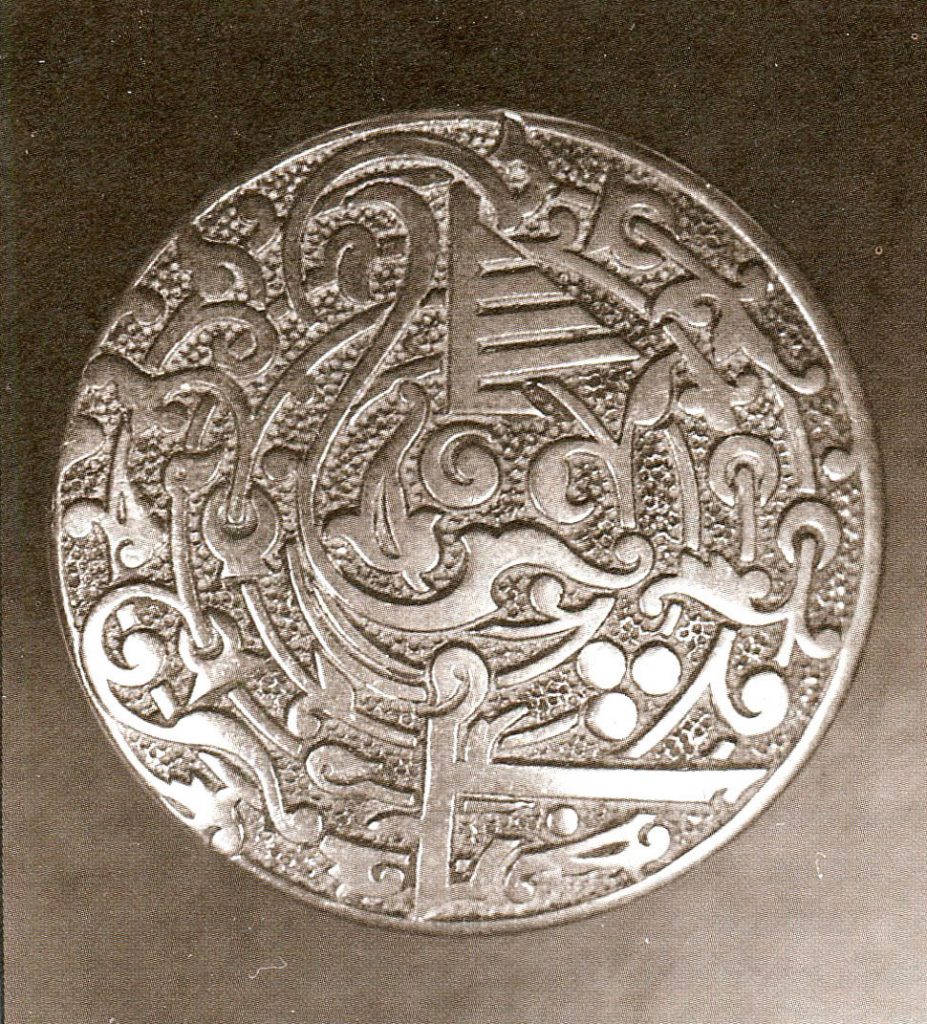
A circle is surrounded by botanical motifs and is circled by small rings. One of these rings instead of a simple circle or ring is an Ankh, or Crux Anasta, the best known of all ancient symbols, as it stands for life. (In the usual salutary title placed after the names of initiates, Ankh, Djed, Seneb, the Ankh symbol represents an umbilical cord and the three words mean health to the naval and marrow to the bones and strength, often in the royal tombs the last of the three is the Was-symbol which means, according to Gardnier, “power in the Priesthood.”) In this drawing the Ankh sign is at the top of the circle. A quarter of the way around, right next to the hole for the screw is the Egyptian Hetep symbol meaning peace and salvation. On the opposite side of the circle from the Ankh sign is the Shen sign, the personal seal and sign for eternity, one everlasting round.[88] Victor J. Rasmussen, The Manti Temple (Provo, UT: Community Press, 1988).
Source of the Doorknob
Now, all of the above may in fact be true, and with the little I know of Hugh Nibley, that is a distinct possibility. However, the pattern on the doorknob in question are taken from an illustrated page of the Quran, and the designs are Arabic in origin. Specifically, the design is found on Plate XXVII (27) of the book Polychromatic ornament. One hundred plates in gold, silver, and colours, comprising upwards of two thousand specimens of the various styles of ancient, oriental, and mediæval art, and including the renaissance and the seventeenth and eigtheenth centuries by Auguste Racinet.
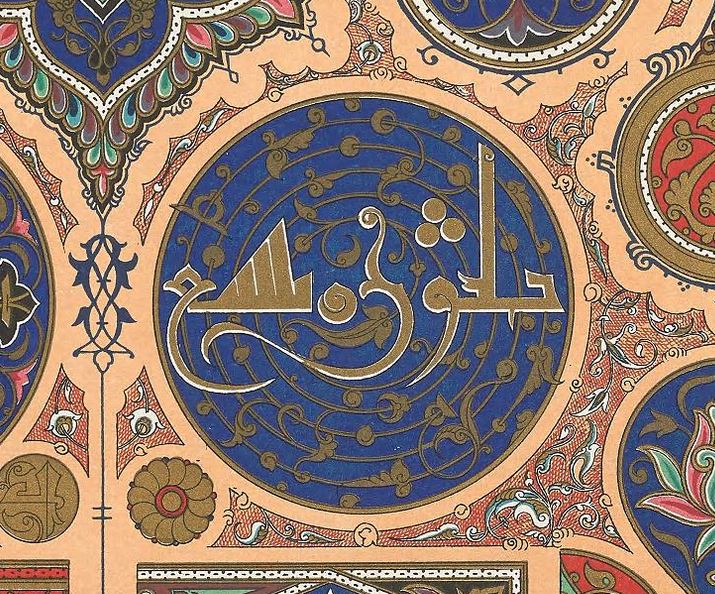
So then, what caused Reid to use a page from the Quran as his inspiration for the Doorknobs?
The True History of the Manti Temple Doorknobs
The answer is, he didn’t.
Because, sadly, John Reid did not design or manufacture the Manti temple Doorknobs. neither did any other of the pioneers who worked on the Manti Temple. In fact, if you reach around and feel the back of a Manti Temple doorknob, you will find there are marks on the backside of the doorknobs. If you could see those marks, you would find that those marks say “Russell & Erwin MFG. Co. New Britain Conn. U.S.A.“
West Doorknob
West doorknob of the temple (left) compared with the makers mark displayed via mirror (right.) (image flipped for readability.)
East Doorknobs
Photos of the west doorknob and manufacture’s marks, displayed via mirror. Not that in one photo a date can clearly be seen in the metal (“Date Jan 25 1870”.) This date, likely either the manufacture date or the patent date, shows that the design is older than the temple itself, as the temple groundbreaking was 7 years later.
By the time the Church was completing the Logan Utah Temple, the decision had been made to order many things as mass-produced, factory-made items via catalog orders. For Logan, at the very least, all the railings, balusters and newel posts came from a catalog. For the Salt Lake Temple, all of the wood trim work would be ordered from a catalog and shipped cross country via the now 23 year old railroad.
And so it was for the door hardware at the Manti Utah Temple. Pieces from the temple can be found within the pages of The Russell & Erwin Mfg. Co. Catalog for 1882. Finding a copy of the catalog, however, is a little more difficult.
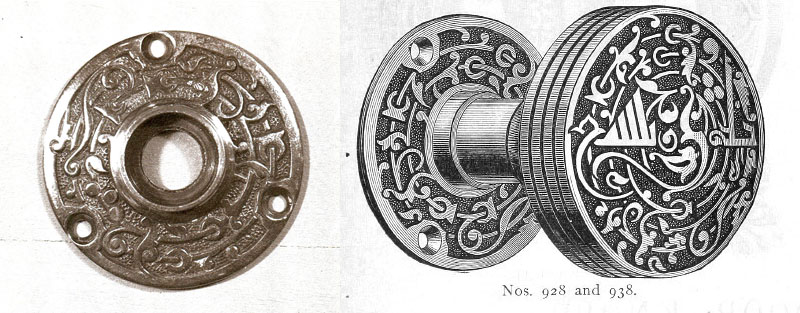
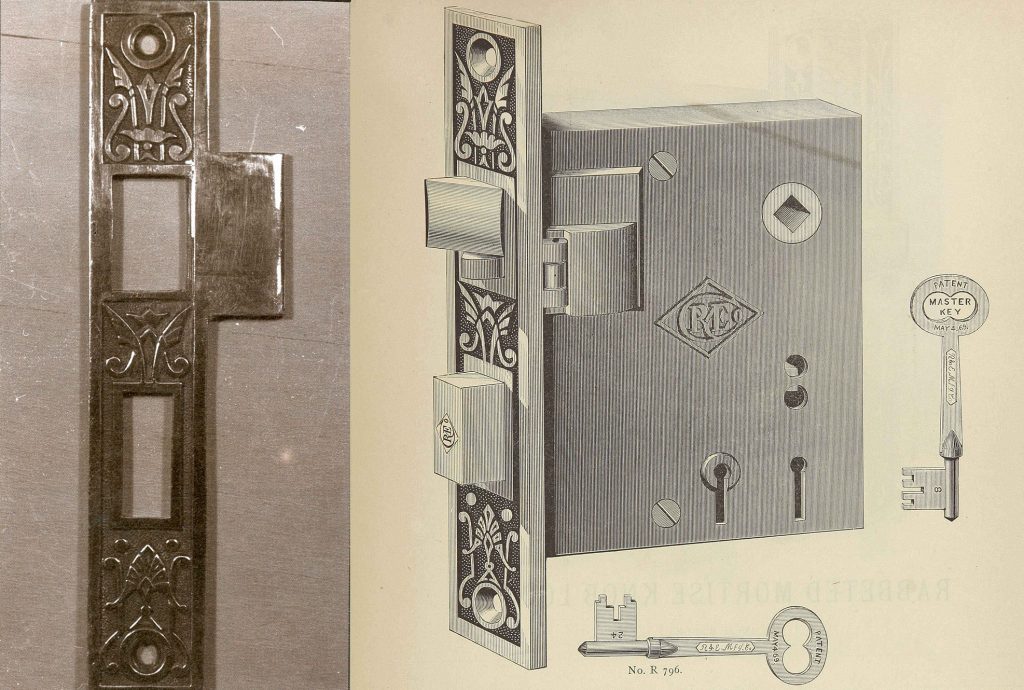
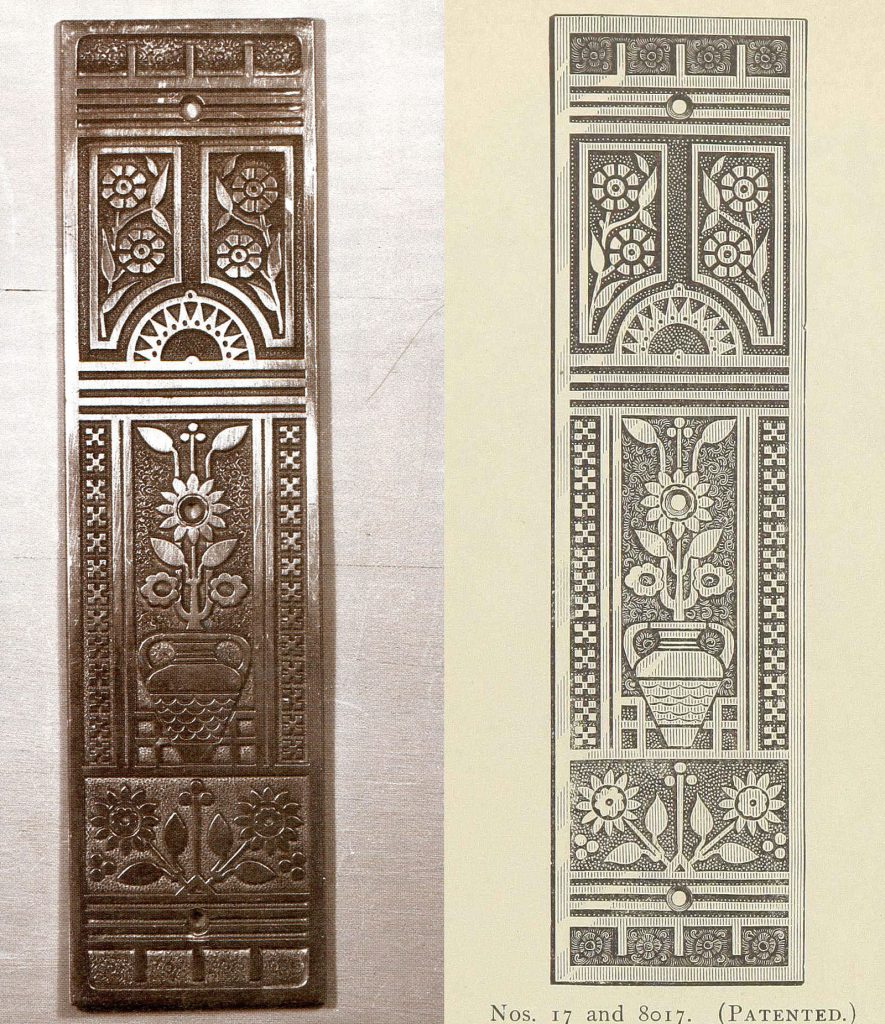
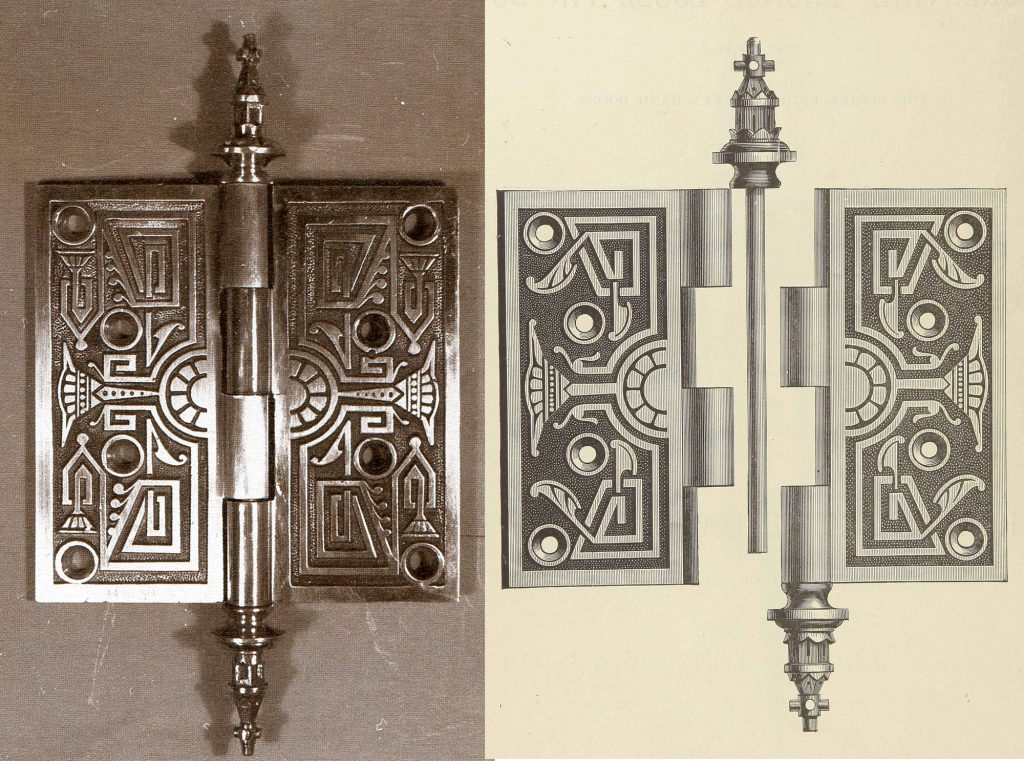
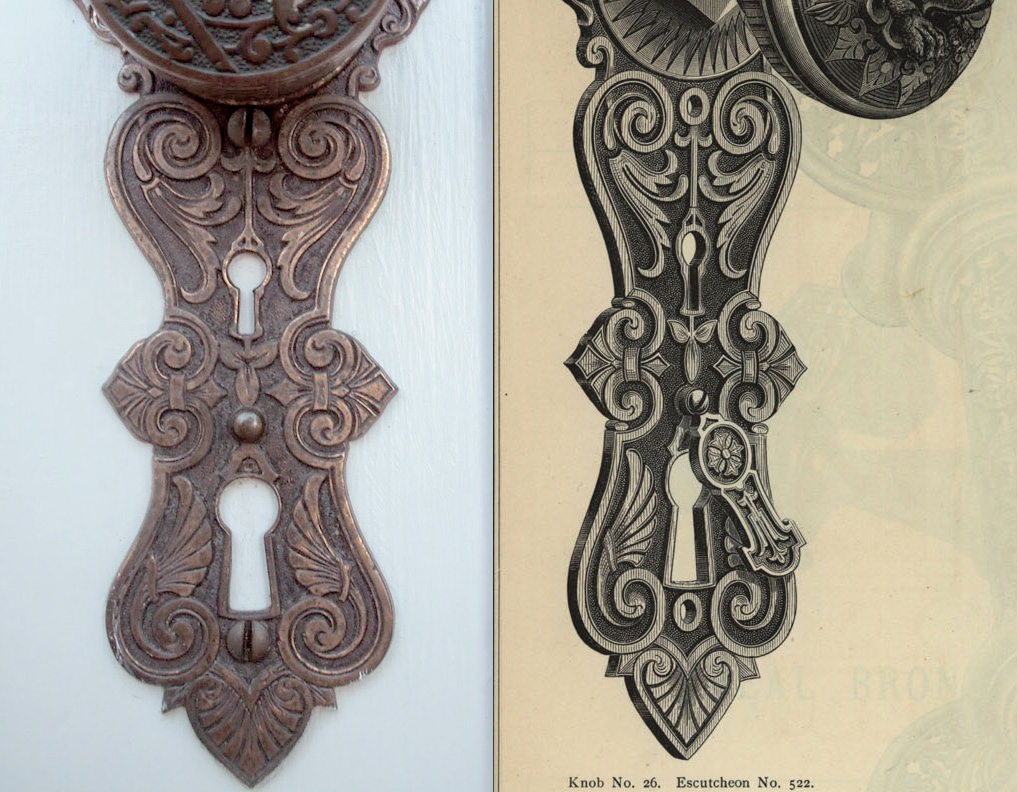
Details
The Manti Temple was the location of the Holy of Holies until the Salt Lake Temple was dedicated. The room was then used for sealings until it was closed in the late 1970s.
The site for the temple was the Manti Stone Quarry, a large hill immediately northeast of town. Early Mormon settlers in the area had prophesied that this would be the site of a temple. When Young announced the building of the temple, he also announced that the 27-acre (110,000 m2) plot would then be known as “Temple Hill.”[89] “The Manti Temple”, Ensign, March 1978
The Manti Temple combines the Gothic Revival, French Renaissance Revival, French Second Empire, and Colonial architectural styles.
Landscape
Many aspects of the Manti Temple are unlike any of the other temples in existence. It used to be said that “the Manti Temple is the only temple you can go through without a recommend.” At one time, there was a large tunnel constructed under the east tower, and a person could actually come from either the south or the north and drive past both temple walls, thus going “through” the temple. However, the tunnel has since been closed.[90] Victor J. Rasmussen, The Manti Temple (Provo, UT: Community Press, 1988).
The temple’s water source is noteworthy. Originally, all the water came from a small spring located within a mile of the temple. President Young had purchased it from William K. Barton in 1870. It has been observed that, through the years, as the need for water has increased, the spring’s production has also miraculously increased. In 1981, the Church connected into the city water system to provide for the needs of the kitchen, but it still relies on the little spring to provide all the irrigation for the landscape.[91] Victor J. Rasmussen, The Manti Temple (Provo, UT: Community Press, 1988).
Exterior
The walls of the temple imitate castle fortifications with their crenelated parapets. The current exterior measures on Google Earth as being 255 ft (77.84 meters) wide by 170 ft (51.81 meters) long. The current estimated footprint of the temple is 32,798 square feet (3,047.03 square meters.)
Cladding
Cream-colored limestone finishes the exterior of this majestic structure. The limestone came from the area where the temple is now located, a site previously known as the Manti Stone Quarry. Additional stone came from the mountains east of the temple and from a quarry owned by the Parry brothers that was northeast of Ephraim.[92] Victor J. Rasmussen, The Manti Temple (Provo, UT: Community Press, 1988). The limestone, known as Oolitic Limestone,[93]Oolite, or oölite, from Ancient Greek ᾠόν (ōión) ‘egg stone’ is a sedimentary rock formed from ooids, spherical grains composed of concentric layers.[2] Strictly, oolites consist of ooids of diameter 0.25–2 millimetres; rocks composed of ooids larger than 2 mm are called pisolites. The term oolith can refer to oolite or individual ooids.(“Oolite,” Wikipedia, accessed 9 December 2023. https://en.wikipedia.org/wiki/Oolite according to many of the contemporary accounts, was soft and easy to cut within the ground, but hardened over time when exposed to air.[94]Deseret News, 28 April 1877; Ephraim Enterprise, 2 May 1877 “Temple Block,” Deseret News, 24 May 1883.
According to one source, the stone has a natural grain to it, and when cut the wrong way across this grain, it weathers very quickly. This weathering necessitated the exterior refurbishment in 1995.[95]Allen, Aaron, Text message thread with Brian Olson, 2023 The original Salt Lake Temple annex was built from this same limestone, and in an image by Charles Savage taken in 1911, the ornamental details had weathered badly in just 17 years. and is likely the reason the decorative ornaments were removed in the 1920s, and the exterior limestone painted white.[96]C.R. Savage Co., photographer. Salt Lake Temple and annex , https://catalog.churchofjesuschrist.org/assets/2ebf15e2-5a9f-4ab5-b4ef-45ede09d67a2/0/0?lang=eng (accessed: December 9, 2023)
Windows
The windows of the Manti Utah Temple have always had clear glass, similar to other temples of the time, such as Nauvoo, Kirtland, and Salt Lake.
Spires and Finial
Spire
The taller of the two towers of the temple is 179 feet (55 m) tall. Each tower has a tin capped gothic style top.
Finial
The east tower features a tall pointed finail, square in cross section, clad in the same tin as the roof below it.
The west tower has a flat roof, with no finial, but a small ornamental railing around it.
1888
Text here, image below
Specifications
| Feet | Meters | |
|---|---|---|
| Height | ||
| to Shoulder | ||
| Width | ||
| Length | ||
| Footprint |
1935
Text here, image below
Specifications
| Feet | Meters | |
|---|---|---|
| Height | ||
| to Shoulder | ||
| Width | ||
| Length | ||
| Footprint |
1956
Text here, image below
Specifications
| Feet | Meters | |
|---|---|---|
| Height | ||
| to Shoulder | ||
| Width | ||
| Length | ||
| Footprint |
1981
Text here, image below
Specifications
| Feet | Meters | |
|---|---|---|
| Height | ||
| to Shoulder | ||
| Width | ||
| Length | ||
| Footprint |
2024
Text here, image below
Specifications
| Feet | Meters | |
|---|---|---|
| Height | ||
| to Shoulder | ||
| Width | ||
| Length | ||
| Footprint |
Symbolism
Inscriptions
1888
1888
There was no inscription on the temple when it was dedicated.
1956
1956
There is one Inscription on the Manti Utah Temple. The letters are raised brass and are on the north face of the entry addition added to the annex.
THE HOUSE OF THE LORD
DEDICATED MAY 21 1888
THE CHURCH OF JESUS CHRIST
OF LATTER-DAY SAINTS
| Order: | House Only |
| Location: | above the entryway |
| Language: | English |
| Type: | Raised |
| Color: | Brass |
| Setting: | Limestone |
| Font: | TBD |
| Glyph | None |
| ChurchName | Yes |
| Temple Name | No |
| Dates | Yes |
1985
1985
There is one Inscription on the Manti Utah Temple. The letters are raised brass and are on the north face of the entry addition added to the annex. The inscription is in two halves, with Holiness to the left of the dour, and House to the right.
HOLINESS
TO THE
LORD
THE HOUSE
OF THE
LORD
| Order: | Holiness > House |
| Location: | Above the entryway |
| Language: | English |
| Type: | Raised |
| Color: | Brass |
| Setting: | Limestone |
| Font: | Marcellus |
| Glyph | None |
| ChurchName | No |
| Temple Name | No |
| Dates | No |
2024
2024
There is one Inscription on the Manti Utah Temple. The letters are engraved, painted black, and are on the north face of the entry addition added to the annex.
HOLINESS TO THE LORD
THE HOUSE OF THE LORD
| Order: | Holiness > House |
| Location: | Above the entryway |
| Language: | English |
| Type: | Engraved |
| Color: | Black |
| Setting: | Limestone |
| Font: | Michelangelo |
| Glyph | None |
| ChurchName | No |
| Temple Name | No |
| Dates | No |
Cornerstone
There is no visible cornerstone on the Manti Temple. Cornerstones at Manti are structural, and were placed 2 years after the groundbreaking. There is not a timecapsule in this temple as far as I know at this time.
Interior
The temple has 74,792 square feet (6,948.4 m2) of floor space.
Rooms
Within the temple are a baptistry, instruction rooms, sealing rooms (where marriages are performed) and a celestial room, which represents heaven on earth. Temple patrons still move through progressive instruction rooms as they did in the 19th century, rather than remaining in one or two instruction rooms, as is typical of modern temples. The Manti Utah Temple is one of only seven temples where patrons progress through four ordinance rooms before passing into the Celestial Room. The other six temples are the Salt Lake Temple, the Laie Hawaii Temple, the Cardston Alberta Temple, the Idaho Falls Idaho Temple, the Los Angeles California Temple, and the Nauvoo Illinois Temple.
The Manti Utah Temple is one of two temples that still employs live acting for presentation of the endowment. (The other is the Salt Lake Temple.)
Stairs
In the temple’s two western octagonal towers are freestanding spiral staircases with no central support. The staircases wind up six stories, which required considerable skill to build.
Having no central support, the stairways are two of only three like them in the United States (the other in the Octagon in Washington DC).[97] Victor J. Rasmussen, The Manti Temple (Provo, UT: Community Press, 1988). Standing at the top of the stairs and looking down is like looking into a large well, six stories deep.[backref name=”history”] Not only is the support system of the stairs unique, but so are the railings, spindles, and paneling. Many have commented that the joints on the black walnut railings are so smooth that they cannot be felt.[98] Victor J. Rasmussen, The Manti Temple (Provo, UT: Community Press, 1988).Over five hundred baluster posts for the stairs were turned on the same lathe, with four stamped, walnut medallions glued to each.[99]Thomas Weston Welch, “Early Mormon Woodworking at Its Best: A Study of the Craftsmanship in the First Temples of Utah,” (master’s thesis, Brigham Young University, 1983), 42.
Murals
Hand-painted murals decorate the walls of the instruction rooms, where temple patrons learn and worship. Minerva Teichert, the prolific American painter, contributed a mural when parts of the temple were renovated in the 1940s. Her artwork adorns the walls of the world room, a room that represents the mortal experience. The mural, which she described as “a great pageant,”[100]Doris R. Dant, “Minerva Teichert’s Manti Temple Murals,” BYU Studies, vol. 38, no. 3 (1999), 16, https://ojs.lib.byu.edu/spc/index.php/BYUStudies/article/viewFile/6578/6227. covers nearly 4,000 square feet of renovated walls.
“What could be more significant or greater,” Teichert asked, “than to tell the story of mankind from the Tower of Babel to the Zion in the tops of the Rocky Mountains?”[101]Dant, “Minerva Teichert’s Manti Temple Murals,” 17. Majestic figures appear, including Abraham, Joseph of Egypt, Moses, Esau, the Pilgrims, Columbus and, at the head of the room, an “Indian Brave as the symbol of the American Continent.”[102]Dant, “Minerva Teichert’s Manti Temple Murals,” 25. These figures, rendered in Teichert’s impressionistic style with minimal detail, weave together in an expansive visual narrative of human history. The painting reflects some of the purposes of temples, which are to help Latter-day Saints come to a greater understanding of their earthly journey, commit to following Jesus Christ, and strive to live service-filled lives. The Manti Utah Temple features beautiful hand-painted murals on the walls of its progressive-style ordinance rooms: Creation Room, Garden Room, World Room each have murals. The Terrestrial Room and Celestial Room do not have murals.
Woodwork
All of the wood for the temple, except for that used in the staircases, came from locations very near the temple. Manti boasted four sawmills. A site just northwest of the city, known as Devil’s Kitchen, grew timber so straight that the settlers were able to cut poles sixty to seventy-five feet long, which they used for the scaffolding.[103]Thomas Weston Welch, “Early Mormon Woodworking at Its Best: A Study of the Craftsmanship in the First Temples of Utah,” (master’s thesis, Brigham Young University, 1983), 42.
The Scandinavian background of the workers was obvious in the construction techniques they used. It one point in the construction of the temple, a Norwegian boat builder was in charge of designing the roof. He had never built a roof for a large building before and was not sure how to go about it, so he simply used the design of a boat and turned it upside down.[104] Victor J. Rasmussen, The Manti Temple (Provo, UT: Community Press, 1988).
When the main structure of the building was complete, work moved to decorating the inside. The Saints took great care in the details of everything. One unique feature of the Manti Temple is the carpet in the celestial room, which contains twenty-seven different colors all woven together.[105] Victor J. Rasmussen, The Manti Temple (Provo, UT: Community Press, 1988).
Pageant
Since 1967, the temple grounds have been used for a summer performance. For eight nights each June, the north side of the temple transforms into an enormous outdoor stage for the Mormon Miracle Pageant. This pageant is a historical drama with live actors portraying scenes from the Restoration of the Church in the 1800s, stories from the Book of Mormon, and the journey of the Sanpete Valley pioneers. Far from city lights, the pageant seats up to 14,000 viewers under the stars. Admission to the pageant is free and approximately 100,000 visitor’s see it each year. In Late October of 2018 the Church announced that the various pageant through out the world would be scaled bark or discontinued. It was announced at that time that the last year for the Mormon Miracle Pageant would be the summer of 2019.
Contractors and Individuals
1888
1888
Architect
William H. Folsom was the architect for this temple.
Contractor
As with most early temples, this was a member built construction.
Other Projects Member Built
| Project | Years |
|---|---|
| Kirtland Ohio | 1833-1836 |
| Nauvoo Temple | 1841-1846 |
| St. George Utah | 1871-1877 |
| Logan Utah | 1877-1884 |
| Manti Utah | 1877-1888 |
| Salt Lake Temple | 1953-1893 |
| Laie Hawaii | 1916-1919 |
| Cardston Alberta | 1913-1923 |
| Mesa Arizona | 1921-1927 |
| Hamilton New Zealand | 1955-1958 |
1956
1956
Architect
Don Carlos Young was the architect for this entrance addition.
Projects By Don Carlos Young Jr.
| Project | Years |
|---|---|
| St. George Utah [renovation] | 1937-1938 |
| Manti Utah [renovation] | 1948-1949 |
1985
1985
Architect
Emil B. Fetzer was the architect for this reonvation on the Church Records.[106]Physical Facilities Department (1972-1998, 2002-2011); Temples and Special Projects Division. Manti Temple and annex additions and alterations, 1982-1997 , https://catalog.churchofjesuschrist.org/record/5f58a5cb-8c12-46aa-ae53-2f6ad24846e6/0?view=summary&lang=eng (accessed: December 18, 2023)
Other Projects By Emil Fetzer
| Project | Year |
|---|---|
| Provo Utah | 1968-1972 |
| Ogden Utah | 1968-1972 |
| Washington D. C. [supervising architect] | 1968-1974 |
| Lincoln Center skyscraper and Stake Center, (now houses the Manhattan New York Temple) | 1968 |
| Idaho Falls Idaho [renovation] | 1972-1973 |
| Mesa Arizona [renovation] | 1972-1975 |
| St. George Utah [renovation] | 1972-1975 |
| São Paulo Brazil | 1975-1978 |
| Tokyo Japan | 1975-1980 |
| Seattle Washington | 1975-1980 |
| Laie Hawaii [renovation] | 1972-1978 |
| Logan Utah | 1972-1979 |
| Pago Pago American Samoa [original] | 1977-1981 |
| Jordan River Utah | 1978-1981 |
| Atlanta Georgia | 1980-1983 |
| Nuku’alofa Tonga | 1980-1983 |
| Santiago Chile | 1980-1983 |
| Mexico City Mexico | 1980-1983 |
| Sydney Australia | 1980-1984 |
| Freiberg Germany | 1982-1985 |
| Manti Utah [renovation] | 1982-1985 |
Interior Designer
The interior designer for this renovation was Florence S. Jacobsen.
Contractor
The General Contractor for this temple renovation was Zwick Construction.
Zwick Projects
| Project | Year |
|---|---|
| Portland Oregon | 1984-1989 |
| Chicago Illinois | <2009 |
| Bountiful Utah Renovation | <2009 |
| Manti Utah | <2009 |
| Portland Oregon | <2009 |
| St. George Utah | <2009 |
| Cordoba Argentina | 2008-2015 |
| Fort Lauderdale Florida | 2009-2014 |
| Cedar City Utah | 2013-2017 |
| Asunción Paraguay | 2019-2020 |
| Yorba Linda California | 2021 |
2024
Architect
The architect for this renovation was CRSA.
Projects by CRSA
| Project | Year |
|---|---|
| Tijuana Mexico | 2010-2015 |
| St. George Utah Chiller Upgrade | 2013-2014 |
| Star Valley Wyoming | 2015-2017 |
| Port-au-Prince Haiti | 2015-2019 |
| Washington D.C. Renovation | 2017-2022 |
| Moses Lake Washington | 2017-2023 |
| Moses Lake Washington Landscape Architect | 2017-2023 |
| St. George Utah Renovation | 2019-2023 |
| Manti Utah Renovation | 2019-2024 |
Contractor
The General Contractor for this temple renovation was Wadman Construction.
Wadman Projects
| Project | Year |
|---|---|
| Payson Utah | 2010-2015 |
| Baton Rouge Louisianna | 2017-2020 |
| Yigo Guam | 2018-2022 |
| Layton Utah | 2018-2024 |
| Syracuse Utah | 2020 |
Sources and Links for the Manti Utah Temple
External links
Additional Articles
- Bendixen, Nani (2009), “The Construction of the Manti Temple”, BYU Religious Education 2009 Student Symposium, Provo, UT: Religious Studies Center, Brigham Young University, pp. 135–147
- Dant, Doris R. (1999), “Minerva Teichert’s Manti Temple Murals”, BYU Studies, 38 (3): 6–44
- Hargis, Barabra (1968). A folk history of the Manti Temple (M.A. thesis). Department of English, Brigham Young University.
- Stubbs, Glen R. (1988) [1976], Temple on a Hill: a History of the Manti Temple (4th (Centennial) ed.), Rexburg, Idaho: Ricks College Press, OCLC 24263168
- Stubbs, Glen R. (1960). A History of the Manti Temple (M.S. thesis). Department of History, Brigham Young University.
Sources/Citation
References
| ↑1 | Satterfield, Rick, “Manti Utah Temple”, Temples of the Church of Jesus Christ of Latter-day Saints, LDSChurchTemples.com, retrieved 2012-10-11 |
|---|---|
| ↑2 | Boyd K. Packer. The Holy Temple, p. 35 |
| ↑3 | Lillian H. Fox, “Manti’s Historical Block 56,” Saga of the Sandpitch, v 22, 1990, p23. https://www.sanpete.com/uploads/1/3/6/2/136253634/saga_of_the_sanpitch_22.pdf |
| ↑4 | Journal History of the Church, 5 August, 1850. Historical Department journal history of the Church, 1830-2008; 1850-1859; 1850; Church History Library, https://catalog.churchofjesuschrist.org/assets/2f0fd083-3682-471f-819f-1326494961f6/0/840?lang=eng (accessed: December 7, 2023) |
| ↑5, ↑10 | ”Prayer Offered by Prest. Brigham Young,” Deseret News, 16 April 1877 |
| ↑6 | Deseret News, 28 April 1877 |
| ↑7 | Victor J. Rasmussen, The Manti Temple (Provo, UT: Community Press, 1988). |
| ↑8 | Dennis Lyman, History at Temple Hill: Manti, VHS (Sandy, UT: Temple Hill Video, 2003). |
| ↑9 | Dennis Lyman, History at Temple Hill: Manti, VHS (Sandy, UT: Temple Hill Video, 2003). |
| ↑11 | Deseret News, 10 May 1877 |
| ↑12 | Deseret News, 5 October 1877 |
| ↑13 | Deseret News, 10 November 1877 |
| ↑14 | Journal History of the Church, 19 November 1877, p5, Historical Department journal history of the Church, 1830-2008; 1870-1879; 1877 November-December; Church History Library, https://catalog.churchofjesuschrist.org/assets/802b5e6e-0f0c-4df2-a8ed-5172cac78a05/0/240?lang=eng (accessed: December 7, 2023) |
| ↑15 | Deseret News, 13 December 1877. |
| ↑16 | J. Taylor, letter to his father, President John Taylor, Deseret News, 10 March |
| ↑17 | Deseret News, 27 June 1878. |
| ↑18 | ”Manti Temple,” Deseret News, 26 March 1876. |
| ↑19 | Ogden Semi Weekly, 19 April 1879 |
| ↑20 | The Daily Ogden Junction, 19 June 1880 |
| ↑21 | The Daily Ogden Junction. 17 July 1880 |
| ↑22 | The Ogden Daily Junction, 23 September 1880 |
| ↑23 | ”Utah Stake Conference,” Territorial Enquirer, 7 December; Irvine, John “Discourse By President John Taylor in the Salt Lake Assembly Hall, Sunday afternoon, December 11, 1881,” Deseret News, 15 March 1882. |
| ↑24 | ”Manti Temple,” Logan Leader, 14 April 1882 |
| ↑25 | ”Manti Temple,” Deseret News, 5 June 1882. |
| ↑26 | ”Manti Temple,” Deseret Evening News, 3 March 1883 |
| ↑27 | ”Manti Temple,” Deseret News, 25 July 1883. |
| ↑28 | ”The Manti Temple,” Ogden Herald, 9 August 1883. |
| ↑29 | ”Metal for the Roof,” Deseret News, 26 September 1883 |
| ↑30 | Deseret Evening News, 16 February 1884 |
| ↑31 | Deseret News, 23 July 1884 |
| ↑32 | ”The Manti Temple,” Deseret News, via The Southern Utonian, 5 December 1884. |
| ↑33 | ”Work on the Manti Temple,” Deseret News, 7 June, 1885 |
| ↑34 | ”Deputies at Manti,” Salt Lake Herald-Republican, 1 December 1885. |
| ↑35 | Salt Lake Herald-Republican, 20 March 1886 |
| ↑36 | Salt Lake Herald Republican, 19 December, 1886 |
| ↑37 | ”Ransacking the Temple,” Deseret News, 1 June 1877. |
| ↑38 | Deseret news, 20 July 1887. |
| ↑39 | ”The Manti Temple,” Salt Lake Herald-Republican, 21 October 1877. |
| ↑40 | ”Manti Temple,” Salt Lake Herald-Republican, 9 May 1888. |
| ↑41 | “May this delightful location be known as a holy hill of Zion, among Thy people”, Church News, Jan 1, 1950 |
| ↑42, ↑43, ↑46, ↑48, ↑51, ↑52, ↑53, ↑55, ↑56, ↑58, ↑67, ↑68, ↑69, ↑88, ↑90, ↑91, ↑92, ↑97, ↑98, ↑104 | Victor J. Rasmussen, The Manti Temple (Provo, UT: Community Press, 1988). |
| ↑44 | Hart, John L. (May 7, 1988), “Manti Temple 100 years old, in mint condition for centennial”, Church News |
| ↑45 | ”Temple to Close for Extensive Repairs Mar. 28,” Manti Messenger, 14 March 1928. |
| ↑47 | ”Lighting Fires Temple At Manti Burns East Spire,” Deseret News, 27 August 1928; “Menacing Fire Threatens Temple,” Gunnison Valley News, 6 September 1928. |
| ↑49 | ”Temple Improvments Being Made,” The Ephriam Enterprise, 9 Septmeber, 1935 |
| ↑50 | Hart, John L. (May 7, 1988), “Manti Temple 100 years old, in mint condition for centennial”, Church News |
| ↑54 | ”New Temple Entrance Nears Completion,” Manti Messenger, 21 January 1949 |
| ↑57 | ”Manti LDS Temple to Open January 15,” Manti Messenger, 10 January 1957. |
| ↑59 | Victor J. Rasmussen, The Manti Temple (Provo, UT: Community Press, 1988). |
| ↑60 | ”Manti Temple to Reopen October 6th,” Manti Messenger, 24 September 1964. |
| ↑61 | ”Manti Temple Eyes Renovation Work,” Ephriam Enterprise, 19 June 1969 |
| ↑62, ↑63, ↑65 | ”LDS Announce Temple Opening for Jordan River, and Close for Manti,” Daily Herald, 22 May 1981 |
| ↑64 | ”Temple Renovation,” Iron County Record, 23 September 1982. |
| ↑66 | Mellor, Pat, “Temple Renovation Will Last for Millenium, President Says,” Manti Messenger, 12 June 1984. |
| ↑70 | “News of the Church”, Ensign, August 1985 |
| ↑71 | Cause Thy Holy Spirit to enter and pervade all of its rooms and facilities”, Church News, 23 June 1985 |
| ↑72 | Manti Utah Temple rededicatory prayer, in Church News, June 23, 1985, http://www.ldschurchnewsarchive.com/articles/61731/Manti-Utah-Temple–Cause-Thy-Holy-Spirit-to-enter-and-pervade-all-of-its-rooms-and-facilities.html. |
| ↑73 | “Two temples scheduled for exterior preservation”, Church News, June 24, 1995 |
| ↑74, ↑79 | The Church of Jesus Christ of Latter-day Saints News Release, “First Presidency Provides Update about Historic Temple Renovation,” 12 Mar. 2021. |
| ↑75 | Williams, Jake, “Save the Manti Temple Murals,” change.org, |
| ↑76 | Stack, Peggy Fletcher. “Historic Manti Murals May Be Saved after All, but Not in the Temple.” The Salt Lake Tribune, 24 Mar. 2021, /. |
| ↑77, ↑80 | “Prophet Announces New Temple for Ephraim, Utah.” Newsroom.churchofjesuschrist.org, 1 May 2021. |
| ↑78 | Walch, Tad. “A Threat Stalks the Manti Utah Temple’s Minerva Teichert Murals.” Deseret News, Deseret News, 21 May 2021. |
| ↑81 | “The Manti Temple”, Ensign, March 1978 |
| ↑82 | Parshall, Ardis E., “Moroni’s Purported Rambles,” keepapitchen.org, 18 November 2010 |
| ↑83 | Tyson Thorpe, “Response to your question” Email to Brian Olson, 16 February 2018 |
| ↑84 | n8c, “Moroni’s Purported Rambles, comment #75″ keepapitchinin, 21 April 2013; CUPHA, “Moroni’s Purported Rambles, comment # 76,” keepapitchinin, 19 December April 2014 |
| ↑85, ↑86, ↑87 | Peterson, John A., “Warren Stone Snow, A Man in Between: The Biography of a Mormon Defender” (1985). Theses and Dissertations. 5042. https://scholarsarchive.byu.edu/etd/5042 |
| ↑89 | “The Manti Temple”, Ensign, March 1978 |
| ↑93 | Oolite, or oölite, from Ancient Greek ᾠόν (ōión) ‘egg stone’ is a sedimentary rock formed from ooids, spherical grains composed of concentric layers.[2] Strictly, oolites consist of ooids of diameter 0.25–2 millimetres; rocks composed of ooids larger than 2 mm are called pisolites. The term oolith can refer to oolite or individual ooids.(“Oolite,” Wikipedia, accessed 9 December 2023. https://en.wikipedia.org/wiki/Oolite |
| ↑94 | Deseret News, 28 April 1877; Ephraim Enterprise, 2 May 1877 “Temple Block,” Deseret News, 24 May 1883. |
| ↑95 | Allen, Aaron, Text message thread with Brian Olson, 2023 |
| ↑96 | C.R. Savage Co., photographer. Salt Lake Temple and annex , https://catalog.churchofjesuschrist.org/assets/2ebf15e2-5a9f-4ab5-b4ef-45ede09d67a2/0/0?lang=eng (accessed: December 9, 2023) |
| ↑99, ↑103 | Thomas Weston Welch, “Early Mormon Woodworking at Its Best: A Study of the Craftsmanship in the First Temples of Utah,” (master’s thesis, Brigham Young University, 1983), 42. |
| ↑100 | Doris R. Dant, “Minerva Teichert’s Manti Temple Murals,” BYU Studies, vol. 38, no. 3 (1999), 16, https://ojs.lib.byu.edu/spc/index.php/BYUStudies/article/viewFile/6578/6227. |
| ↑101 | Dant, “Minerva Teichert’s Manti Temple Murals,” 17. |
| ↑102 | Dant, “Minerva Teichert’s Manti Temple Murals,” 25. |
| ↑105 | Victor J. Rasmussen, The Manti Temple (Provo, UT: Community Press, 1988). |
| ↑106 | Physical Facilities Department (1972-1998, 2002-2011); Temples and Special Projects Division. Manti Temple and annex additions and alterations, 1982-1997 , https://catalog.churchofjesuschrist.org/record/5f58a5cb-8c12-46aa-ae53-2f6ad24846e6/0?view=summary&lang=eng (accessed: December 18, 2023) |

